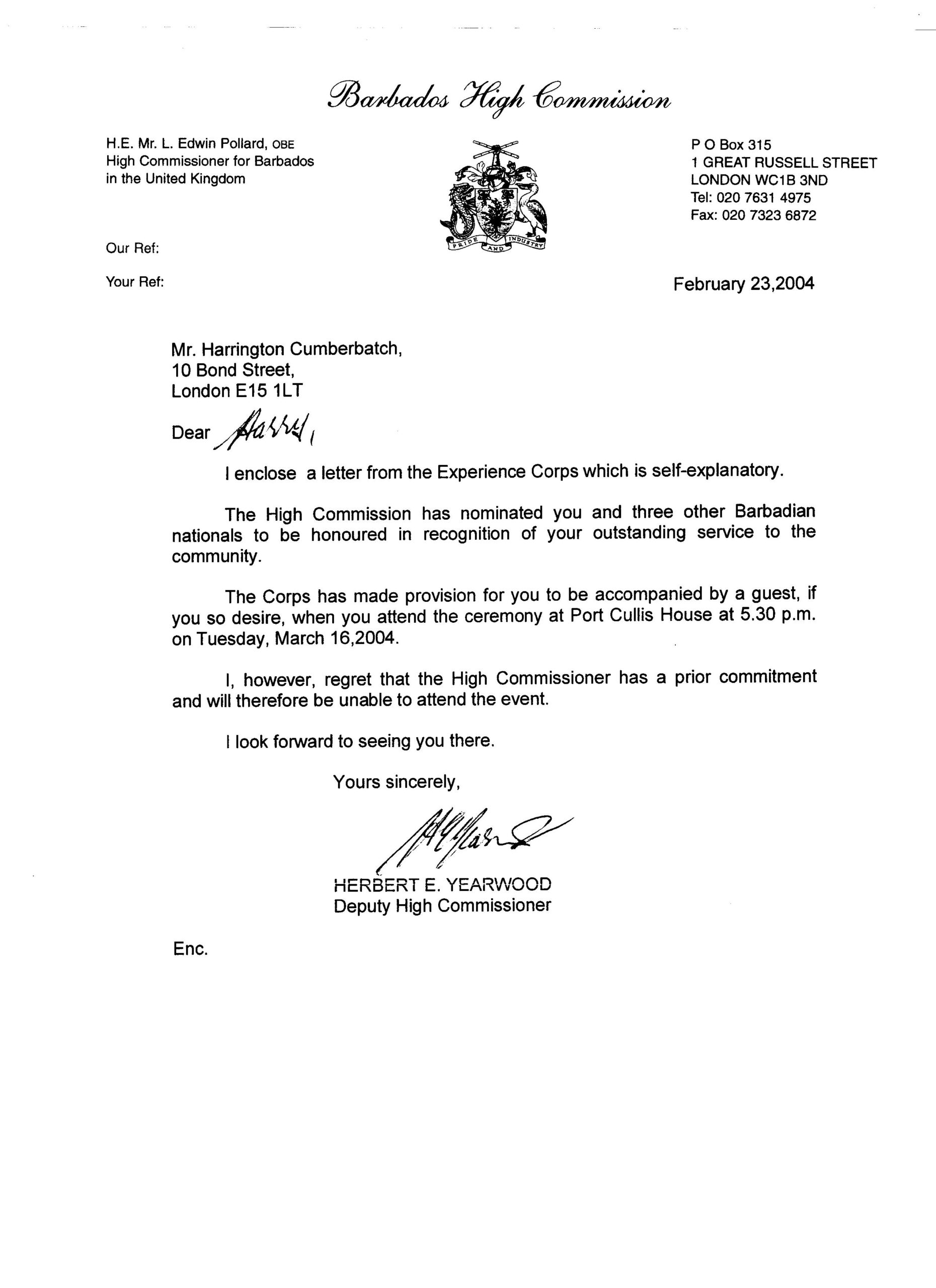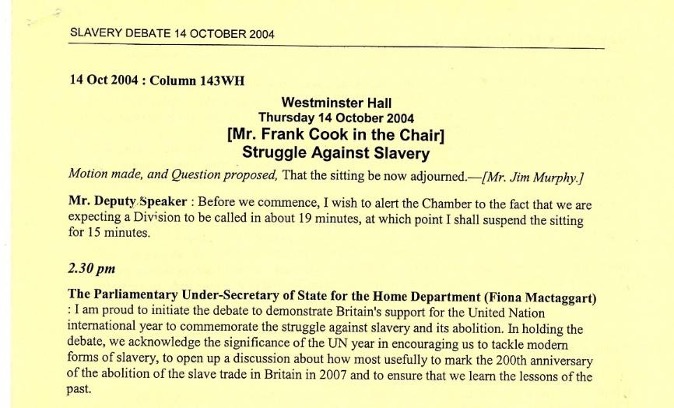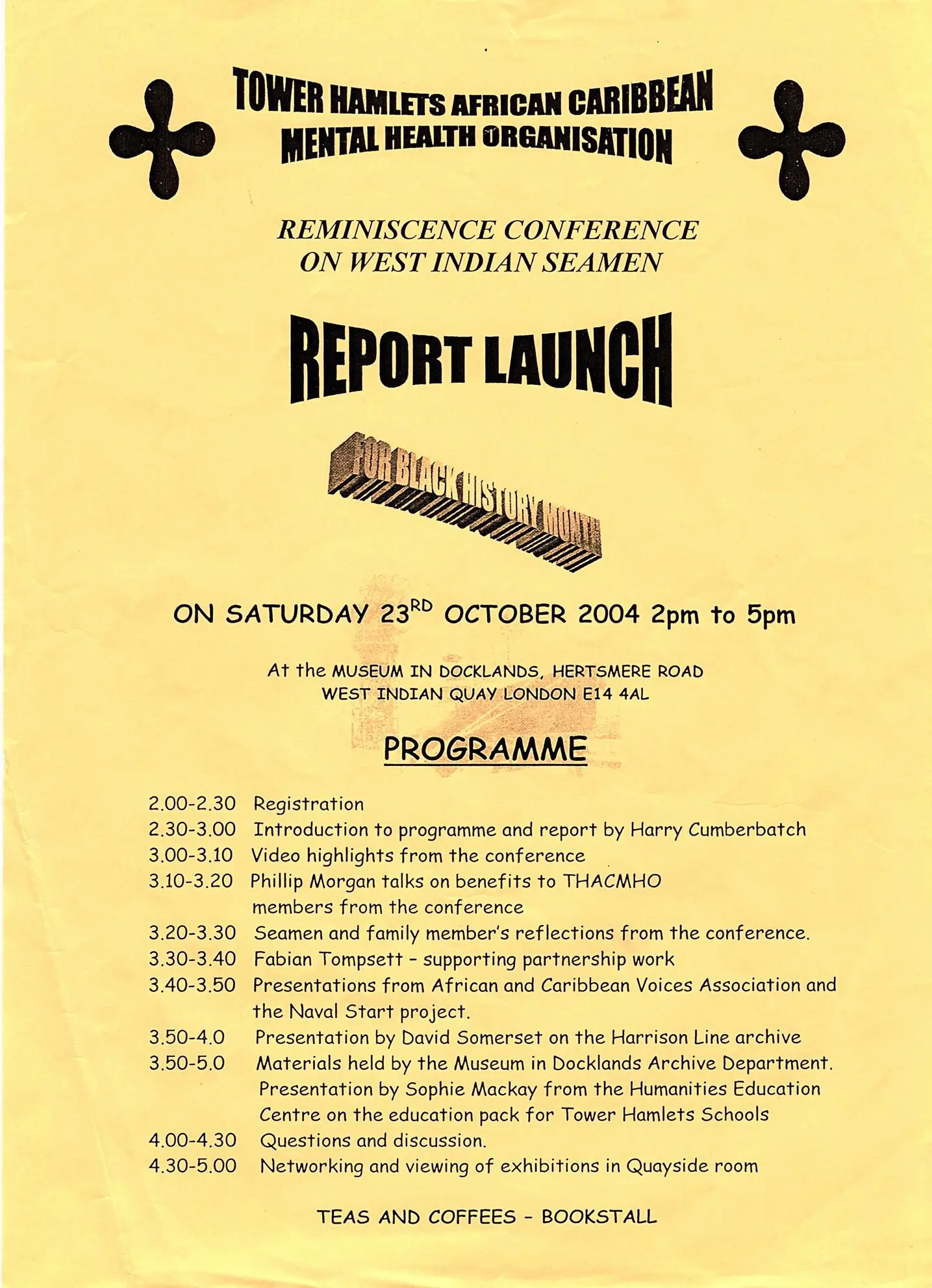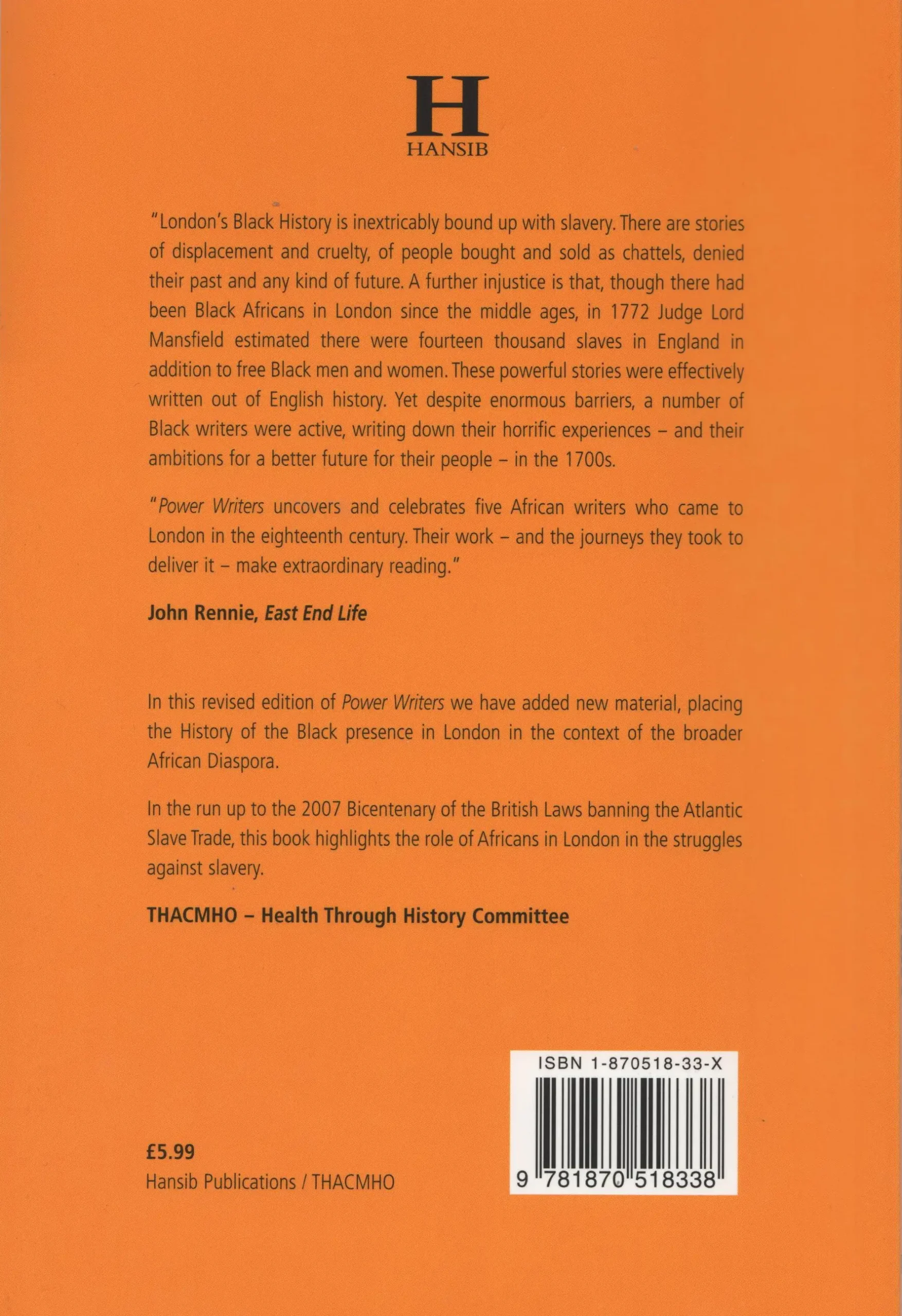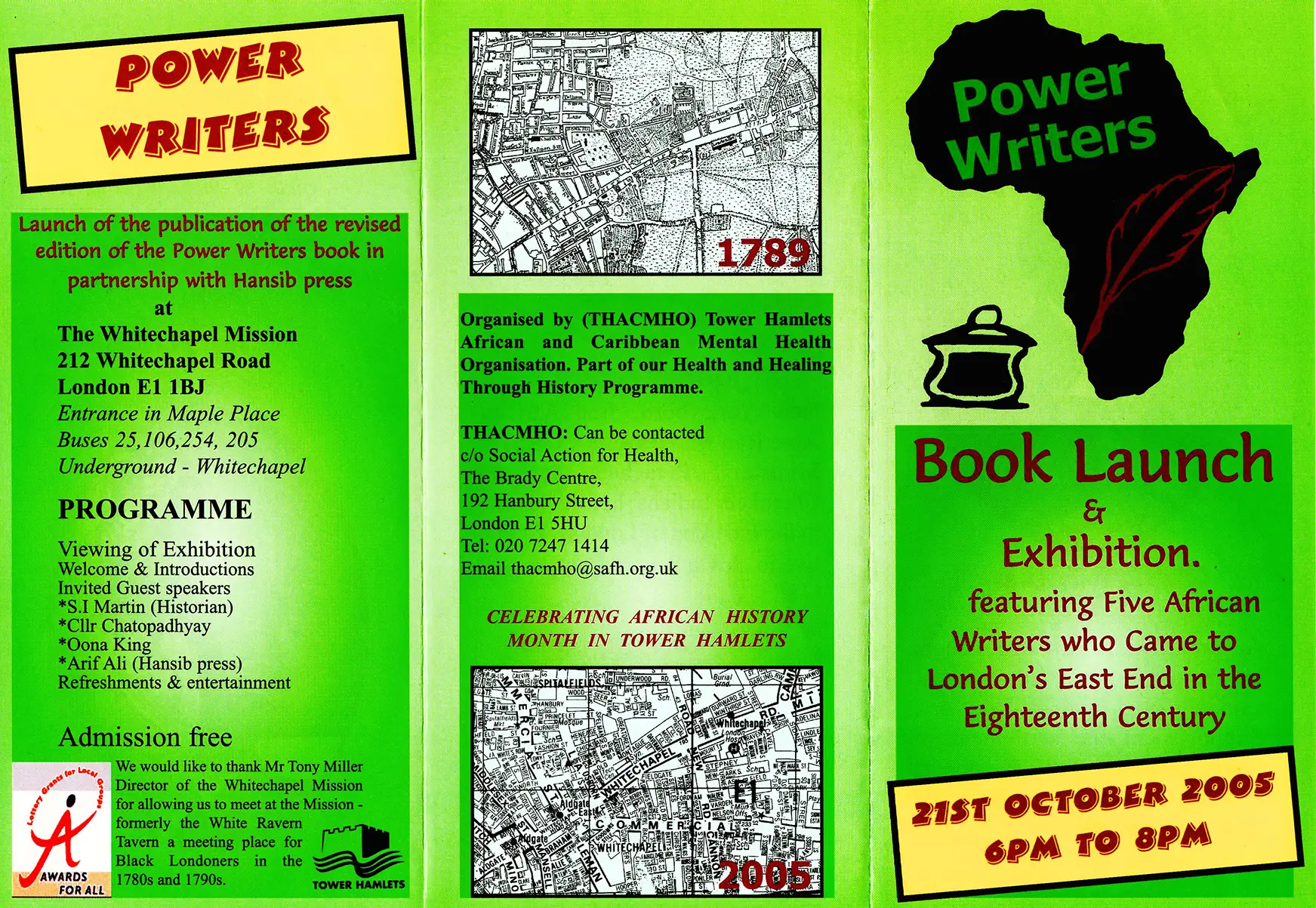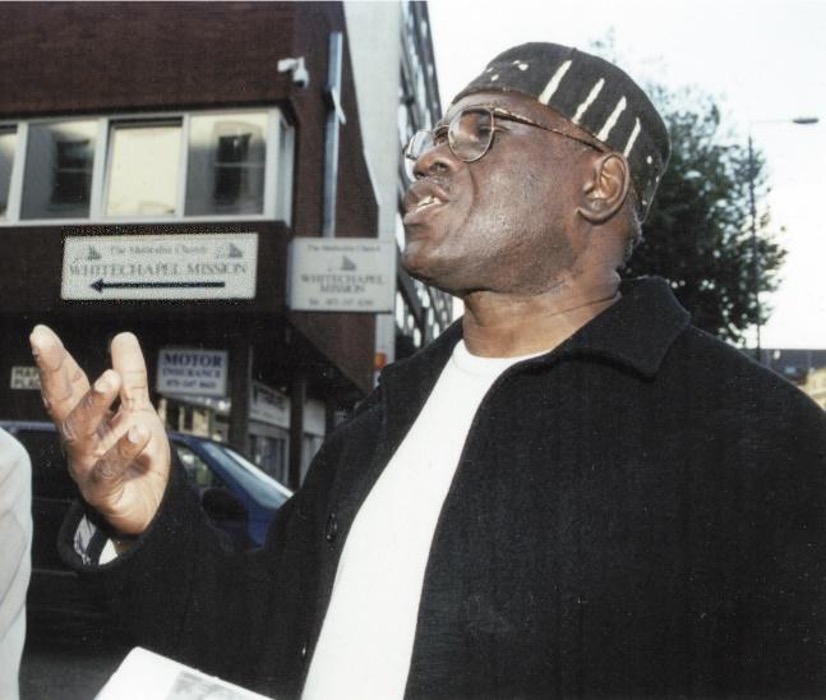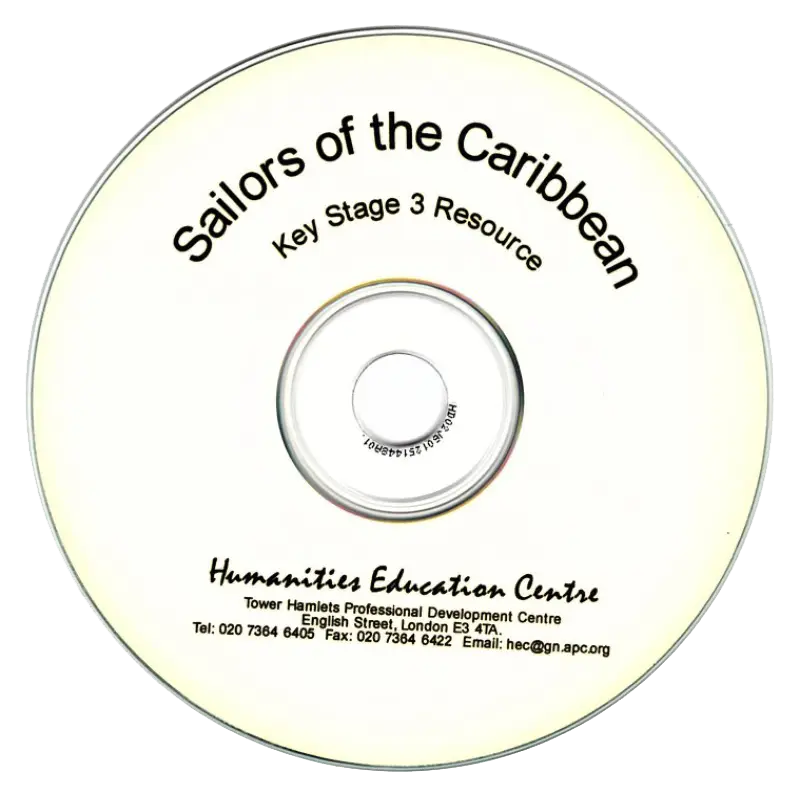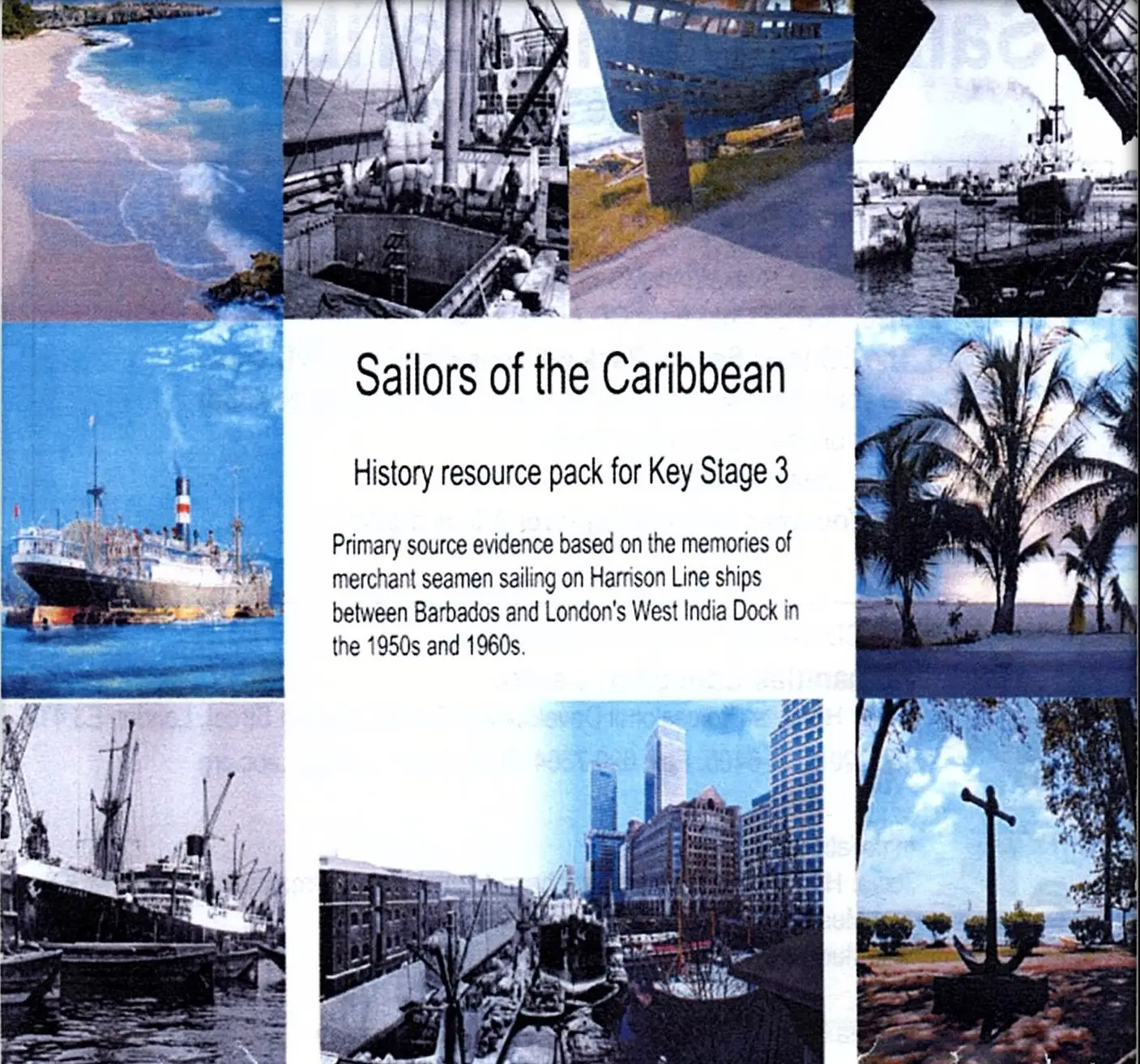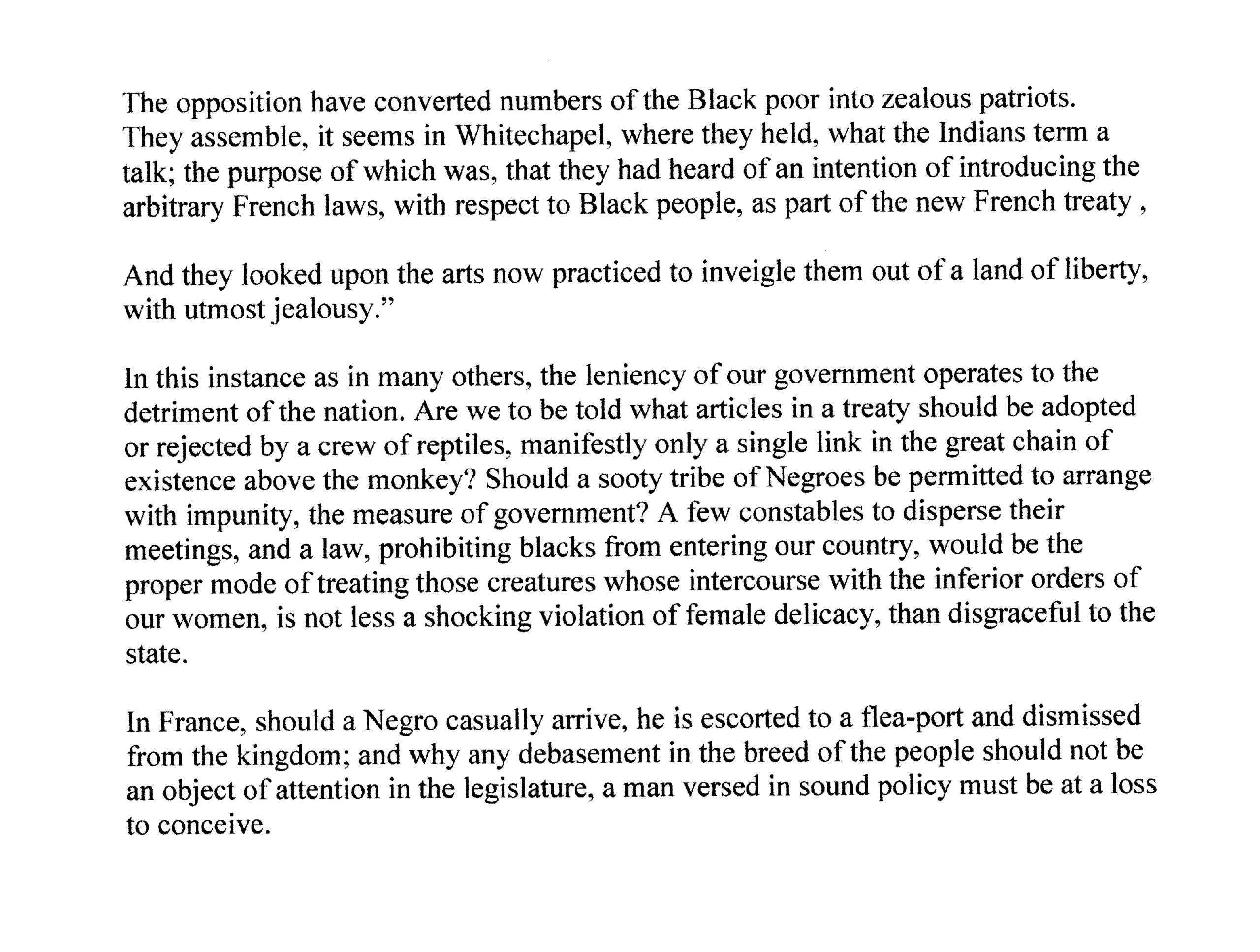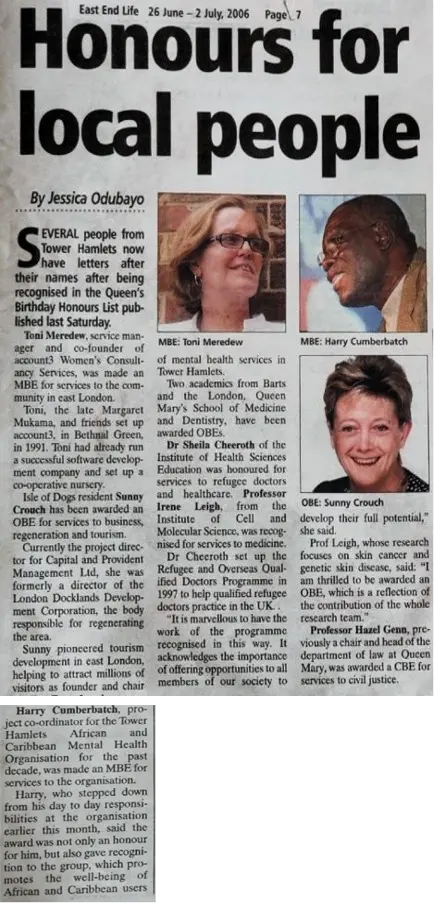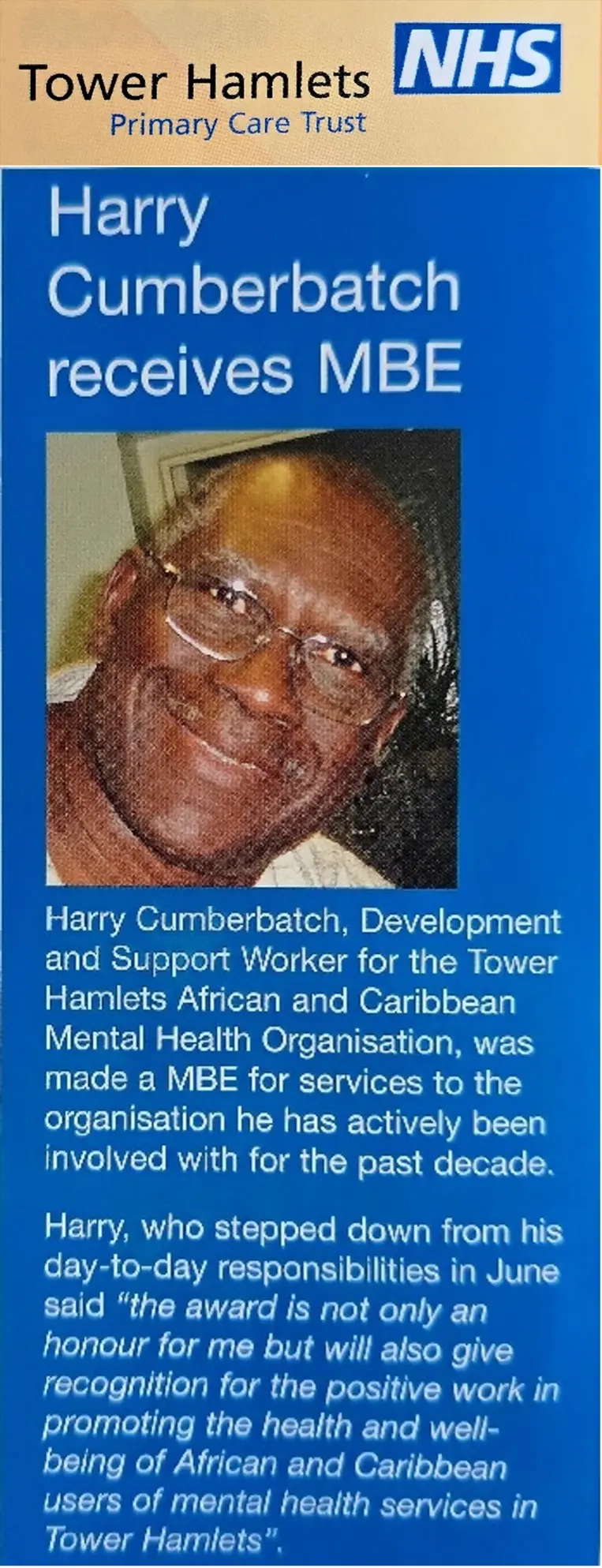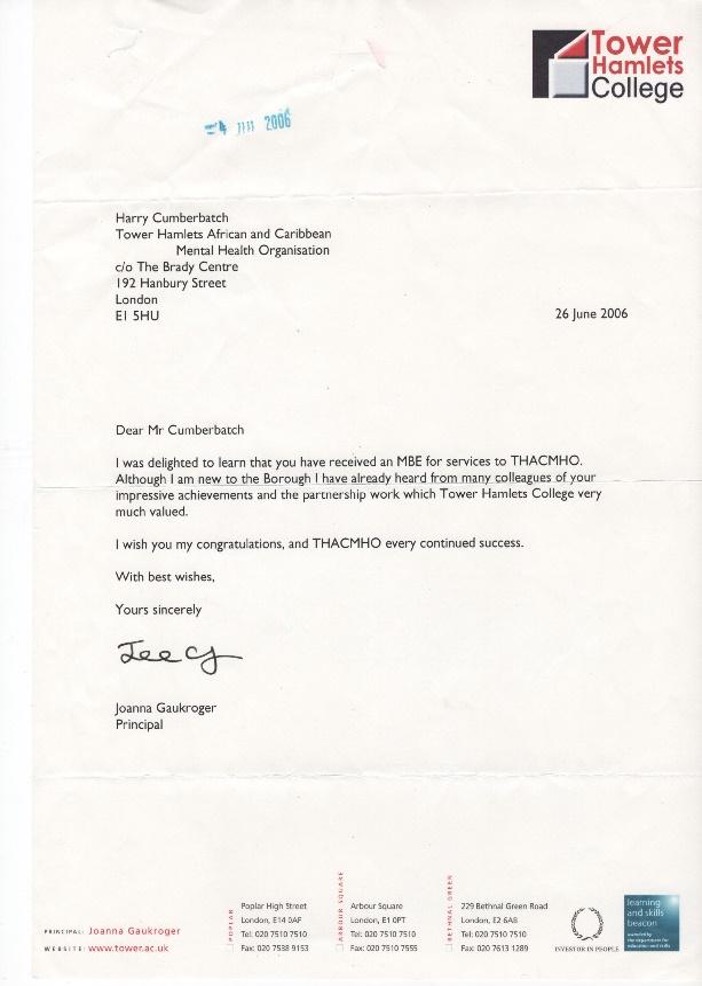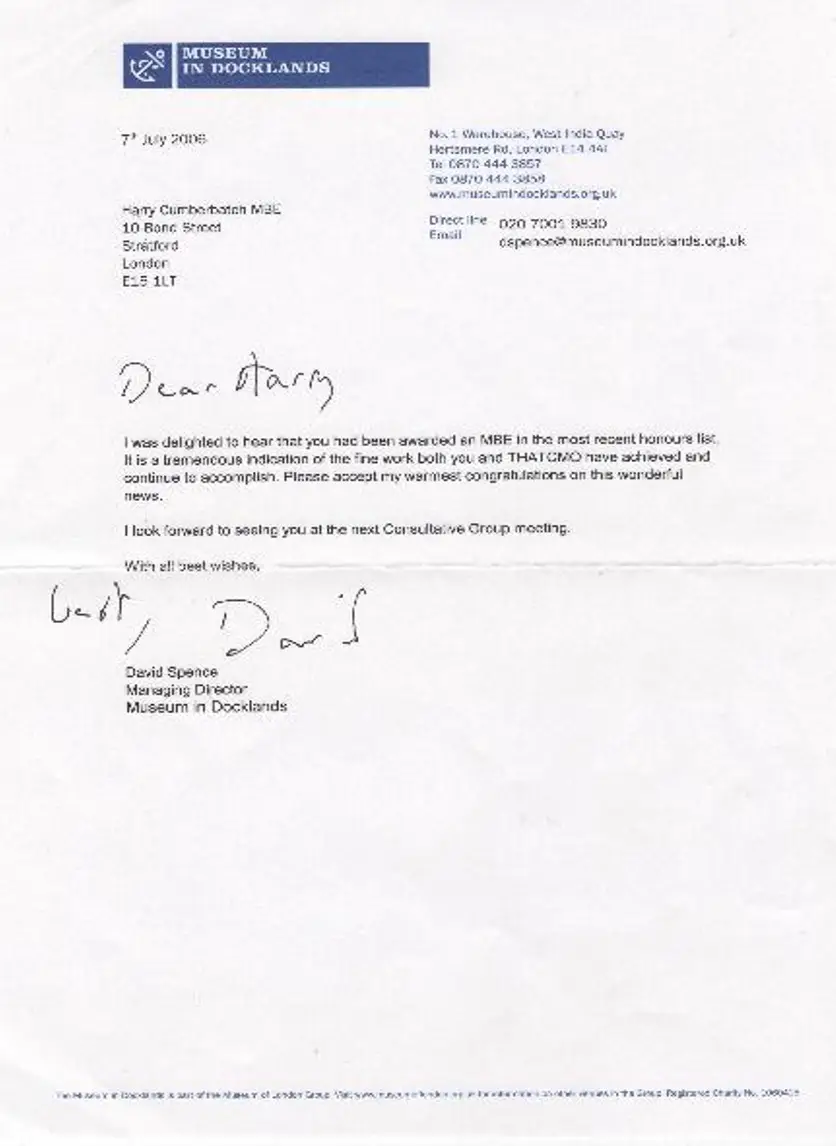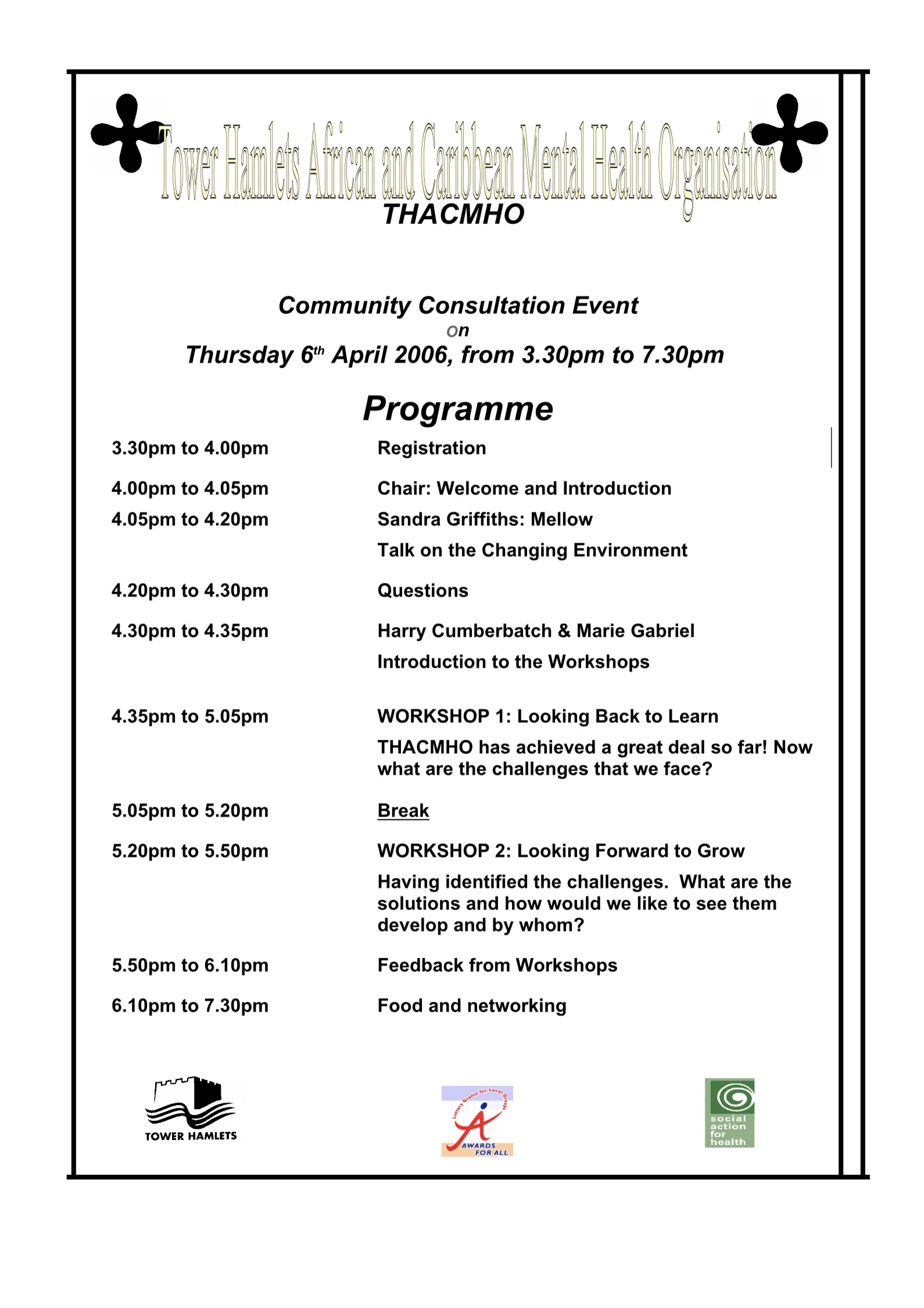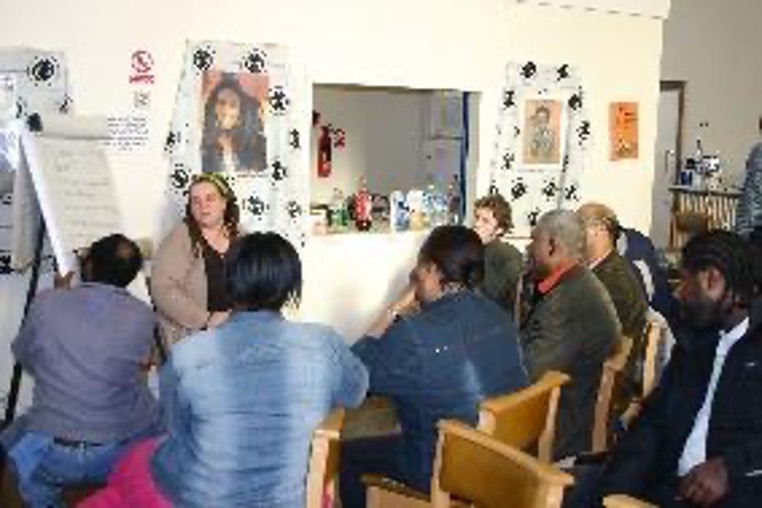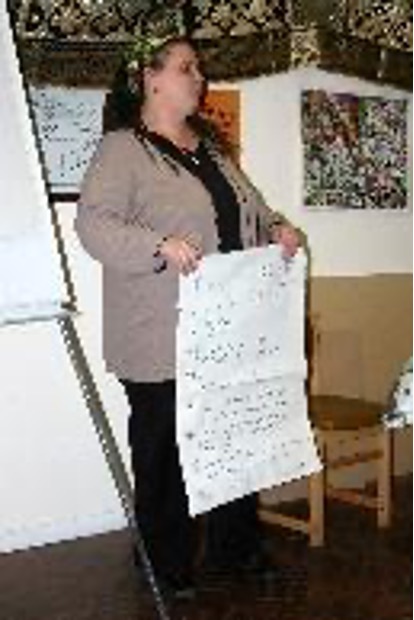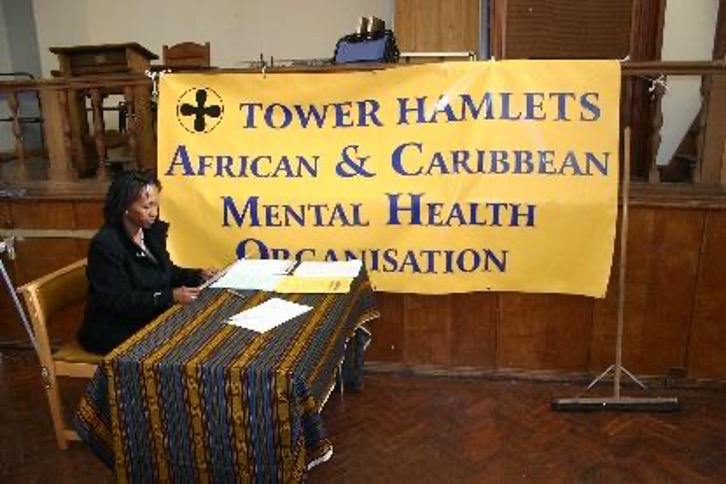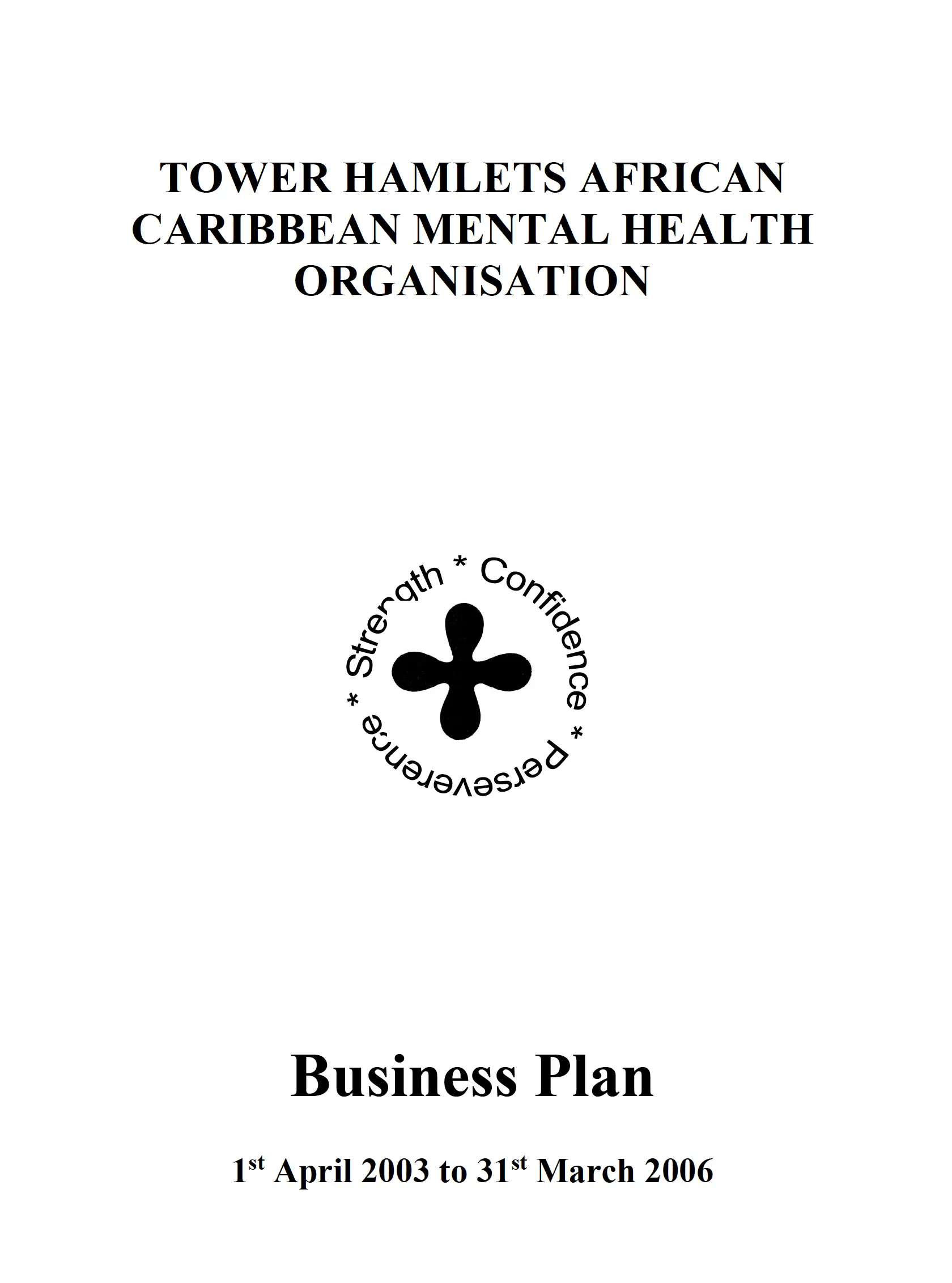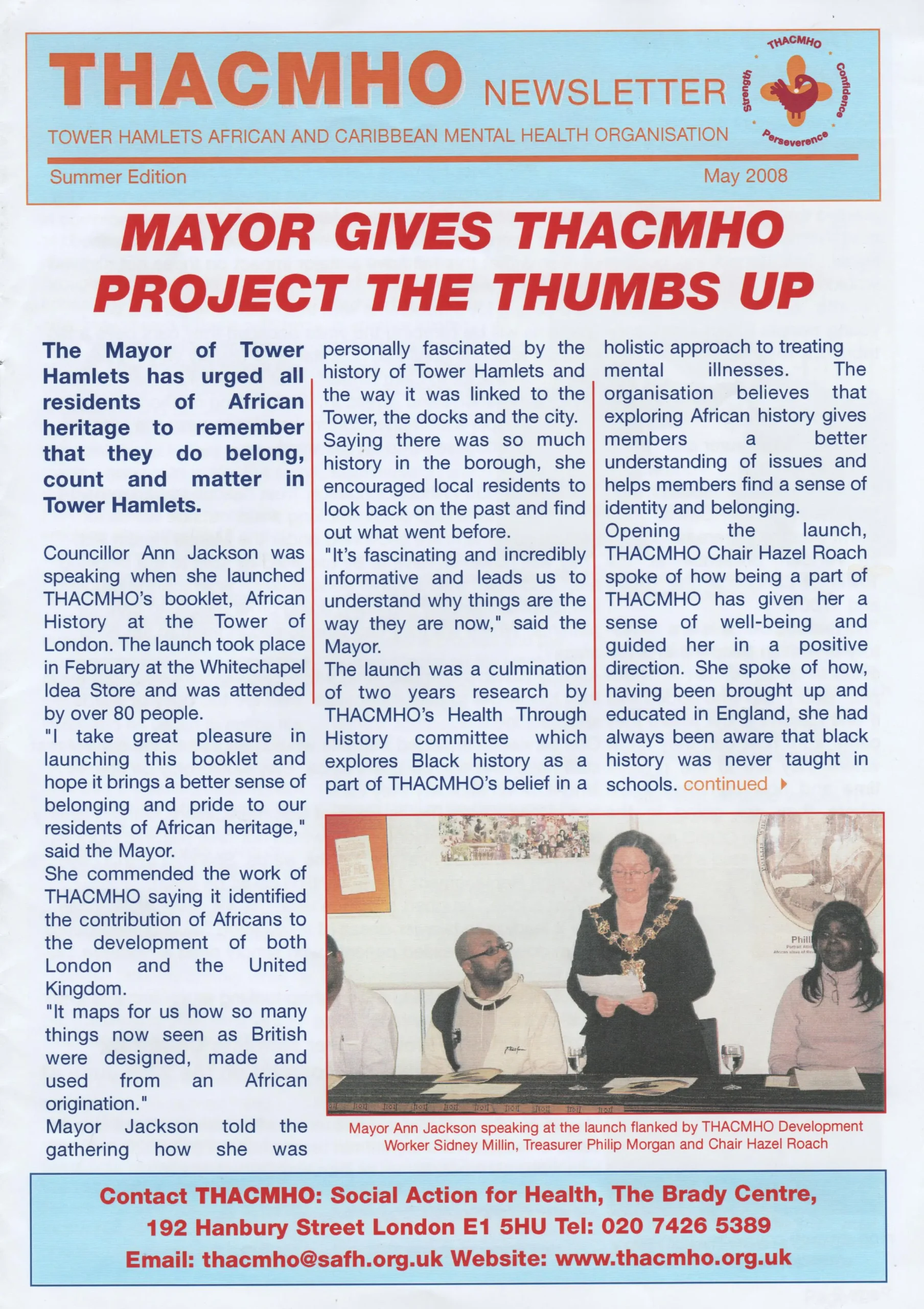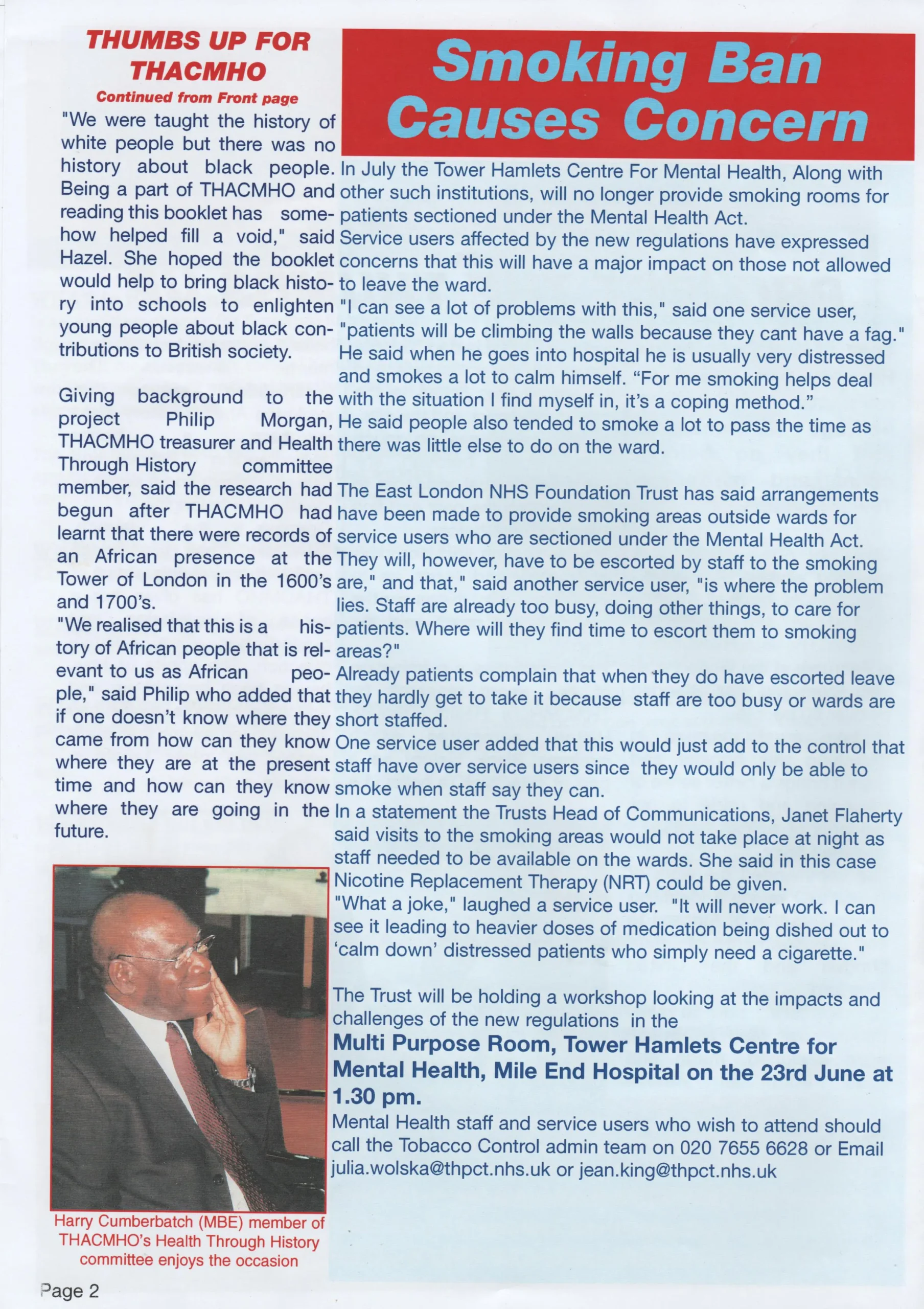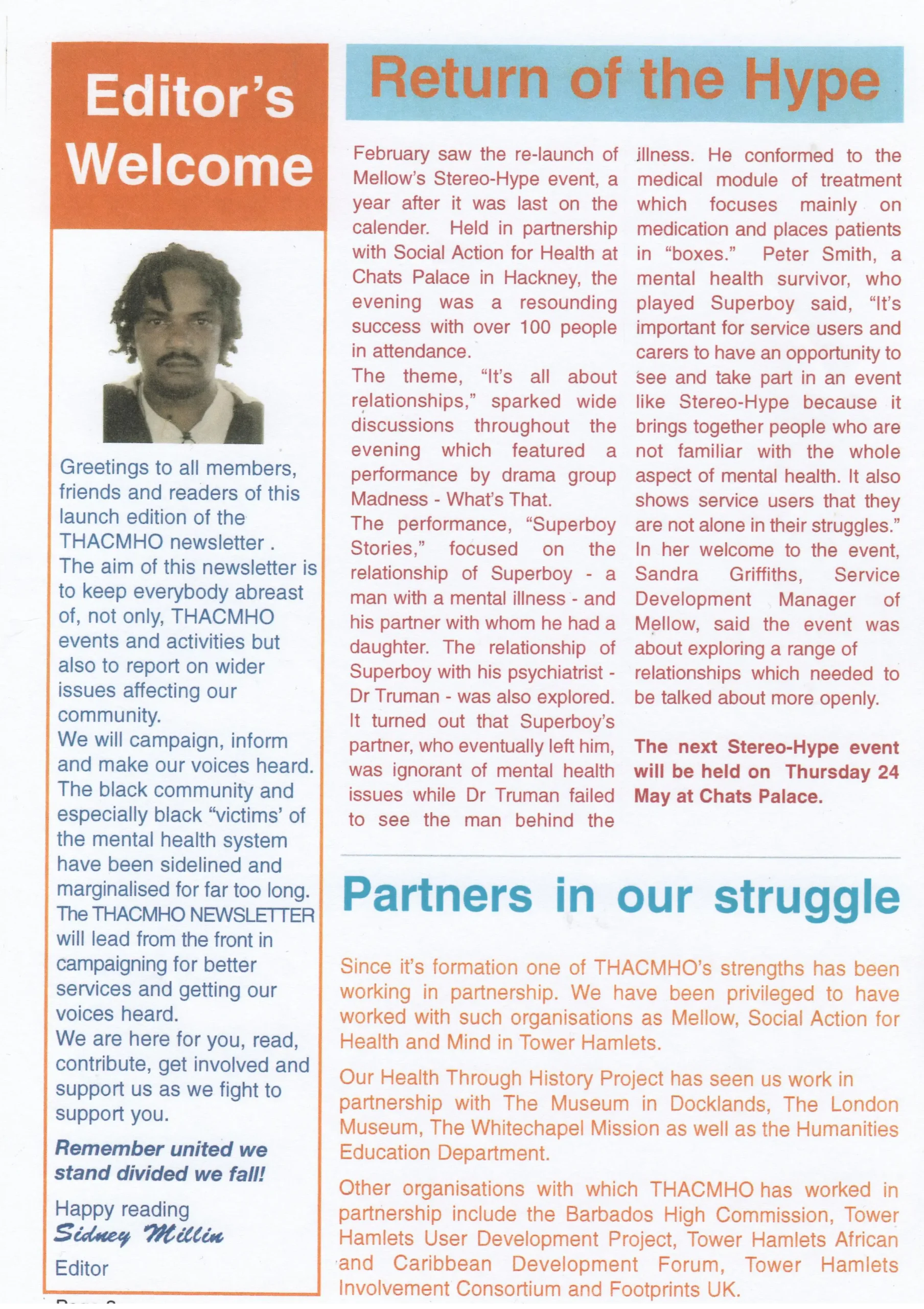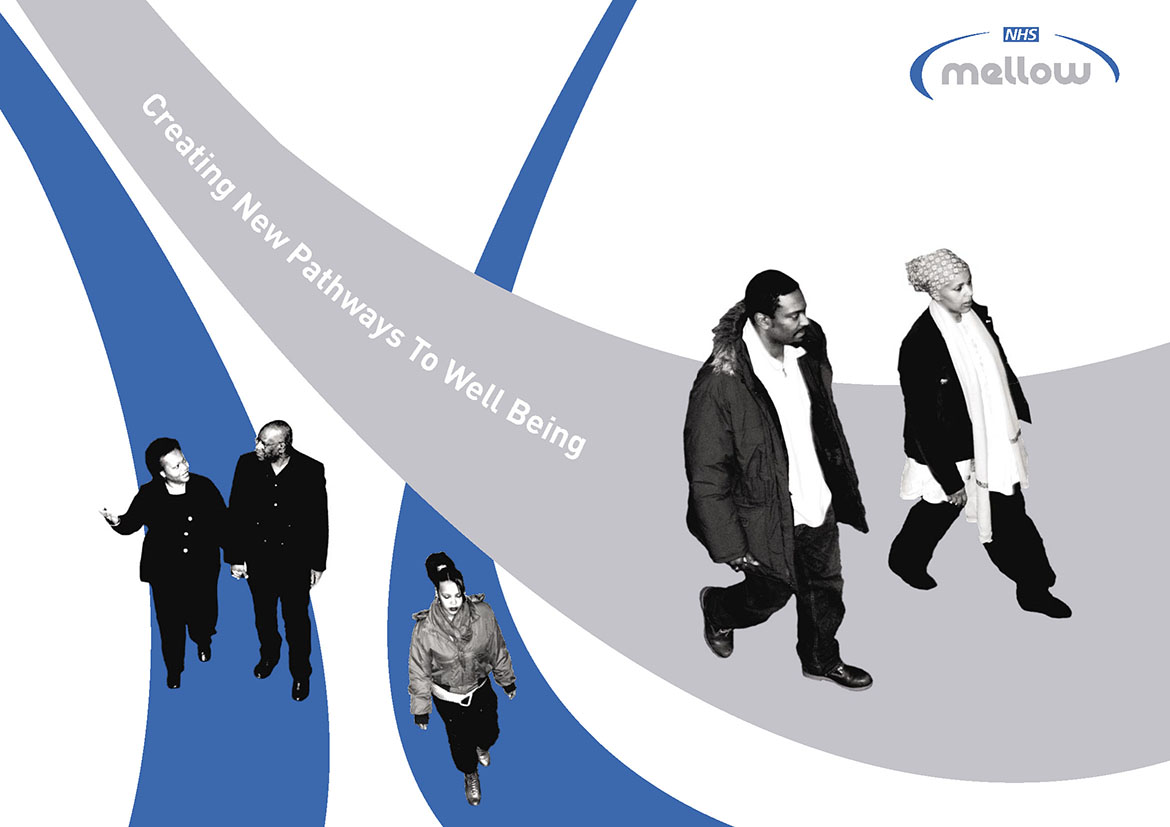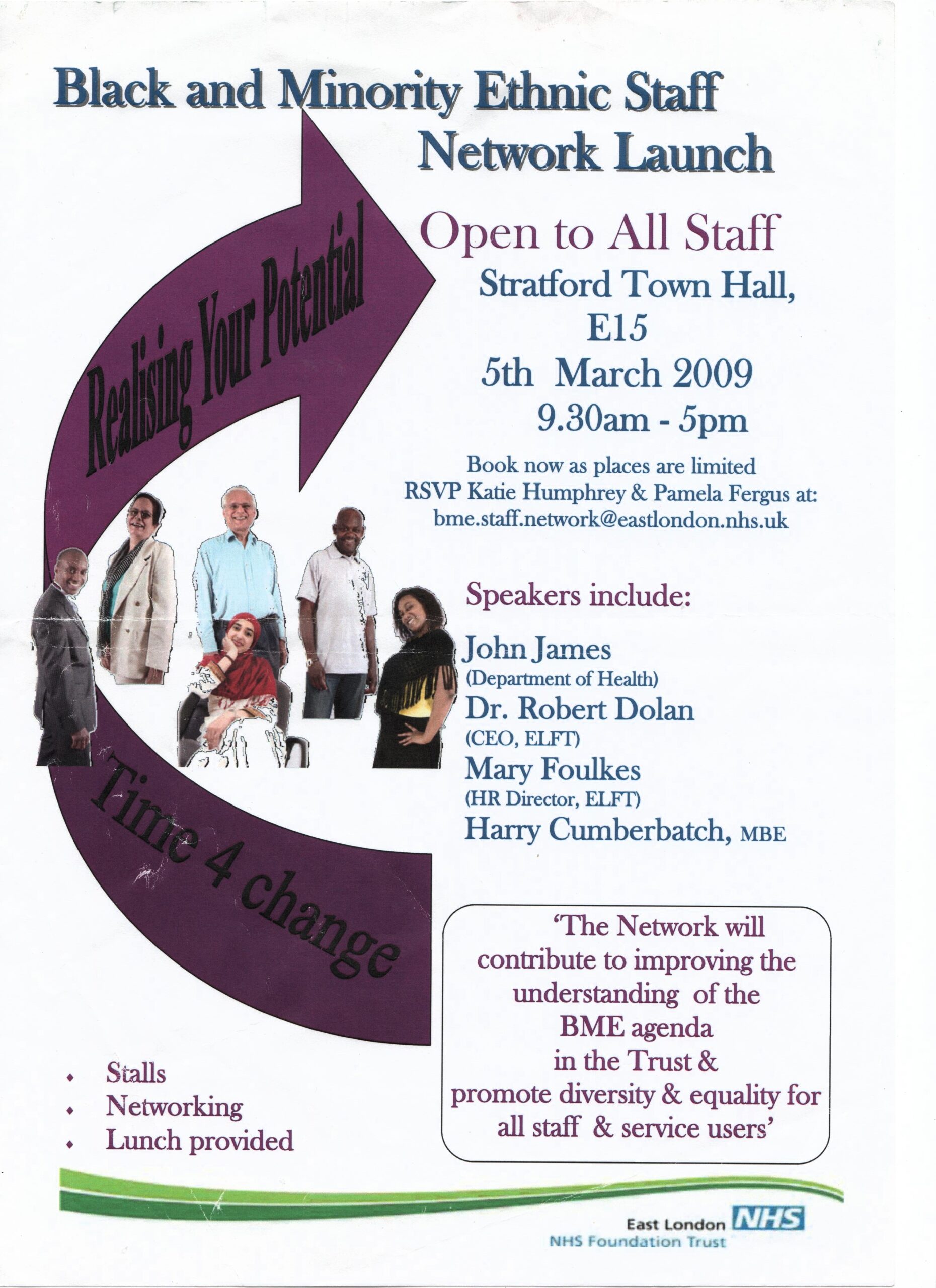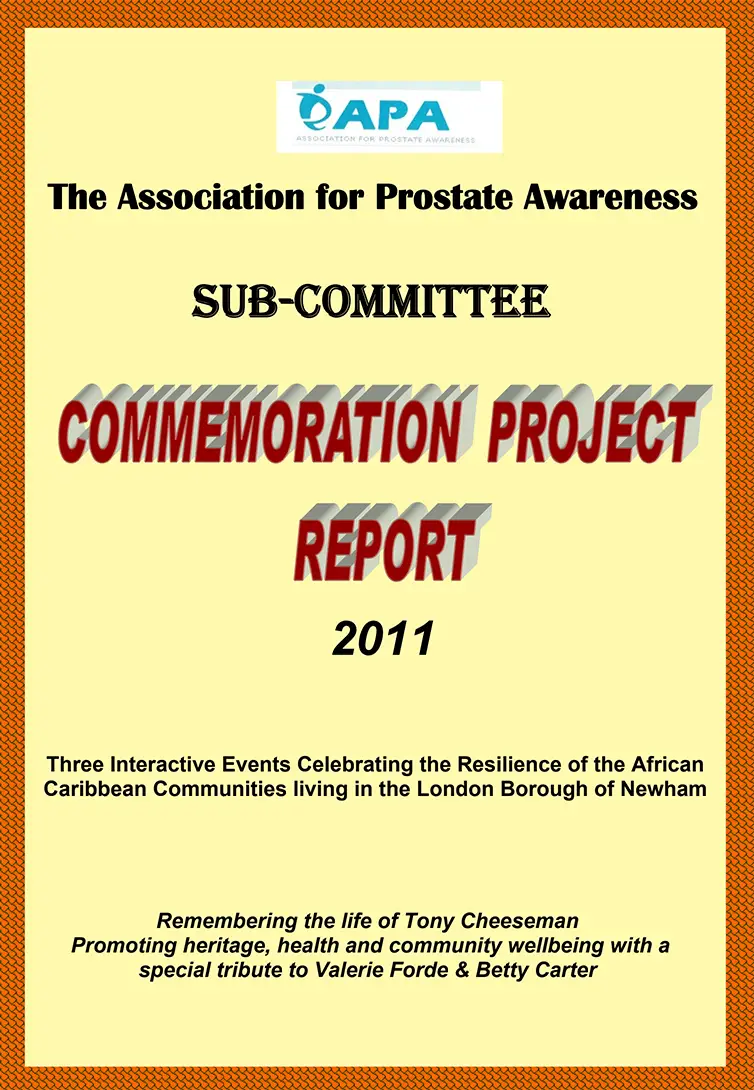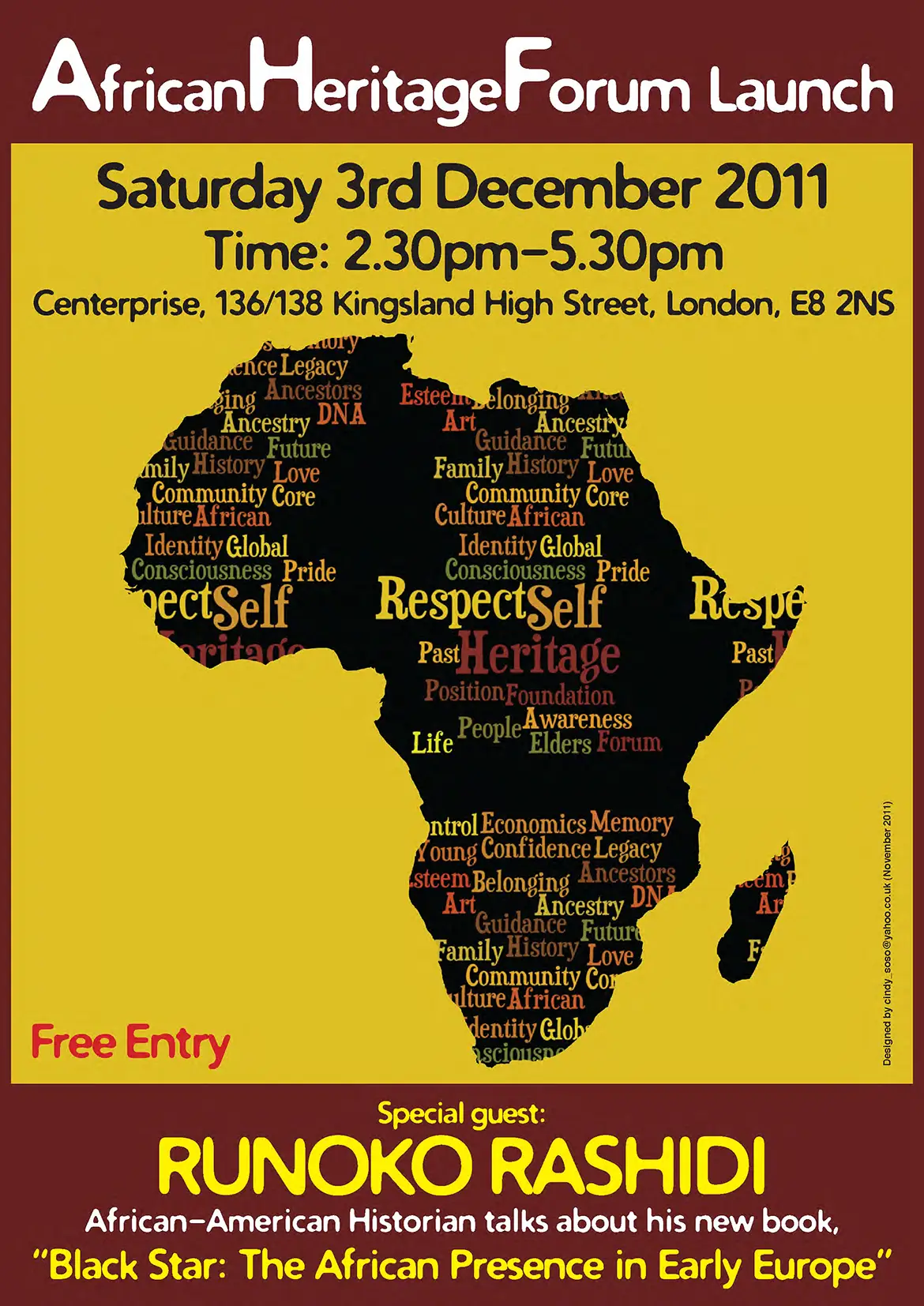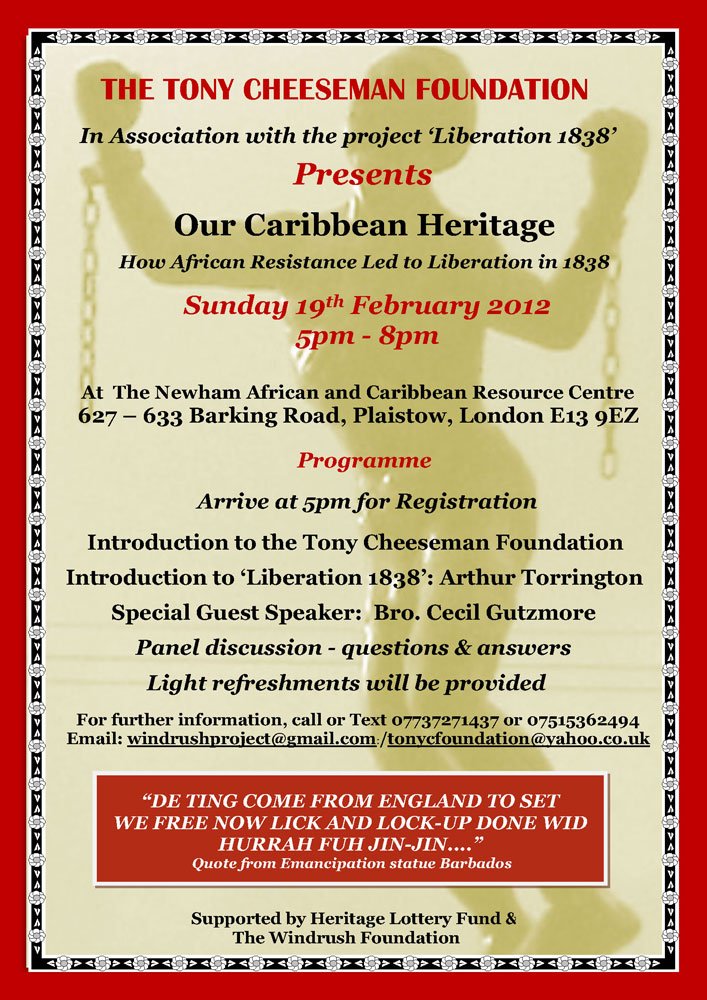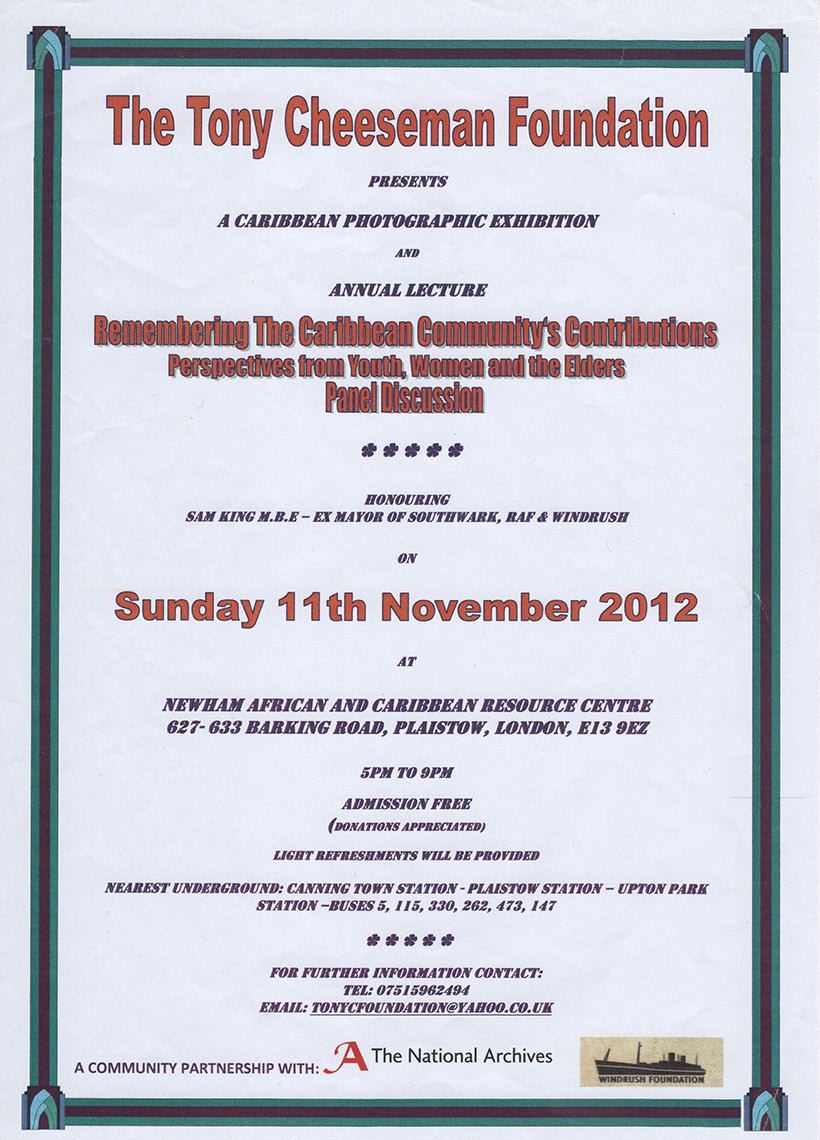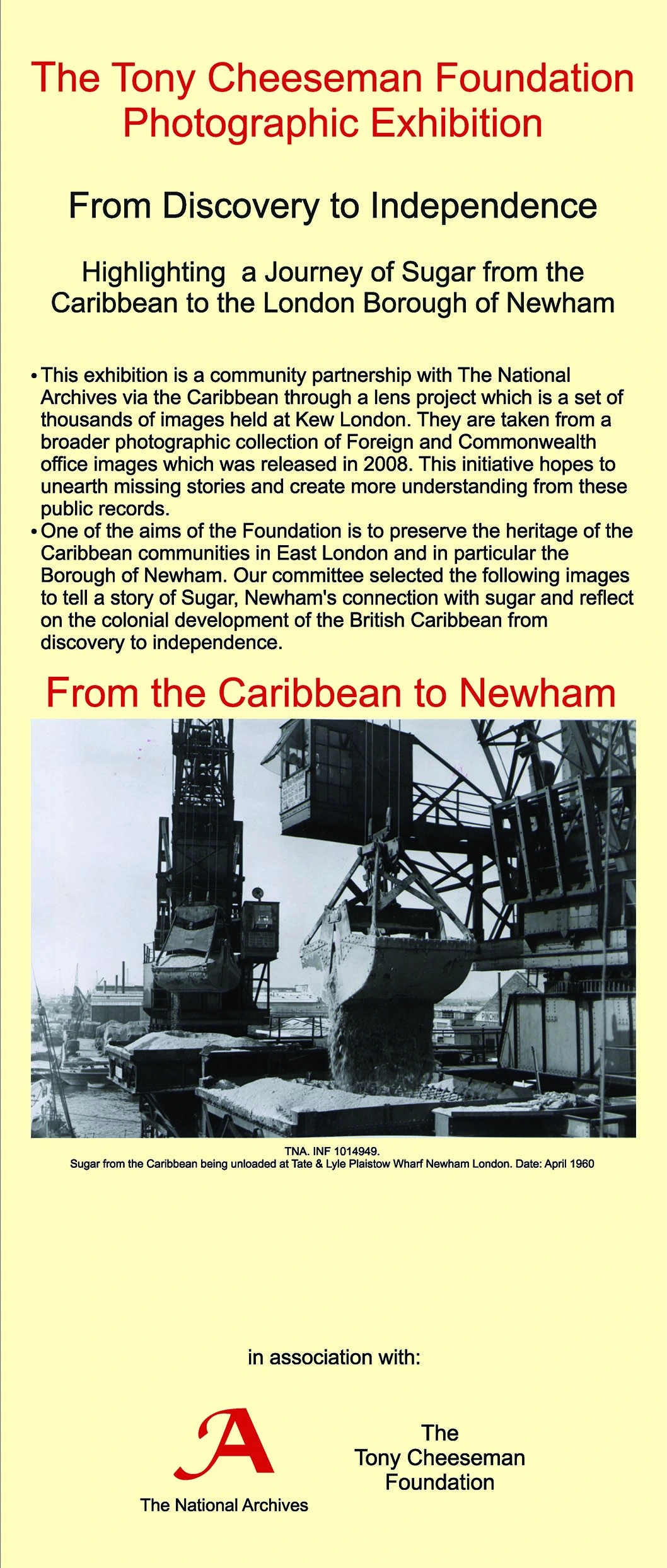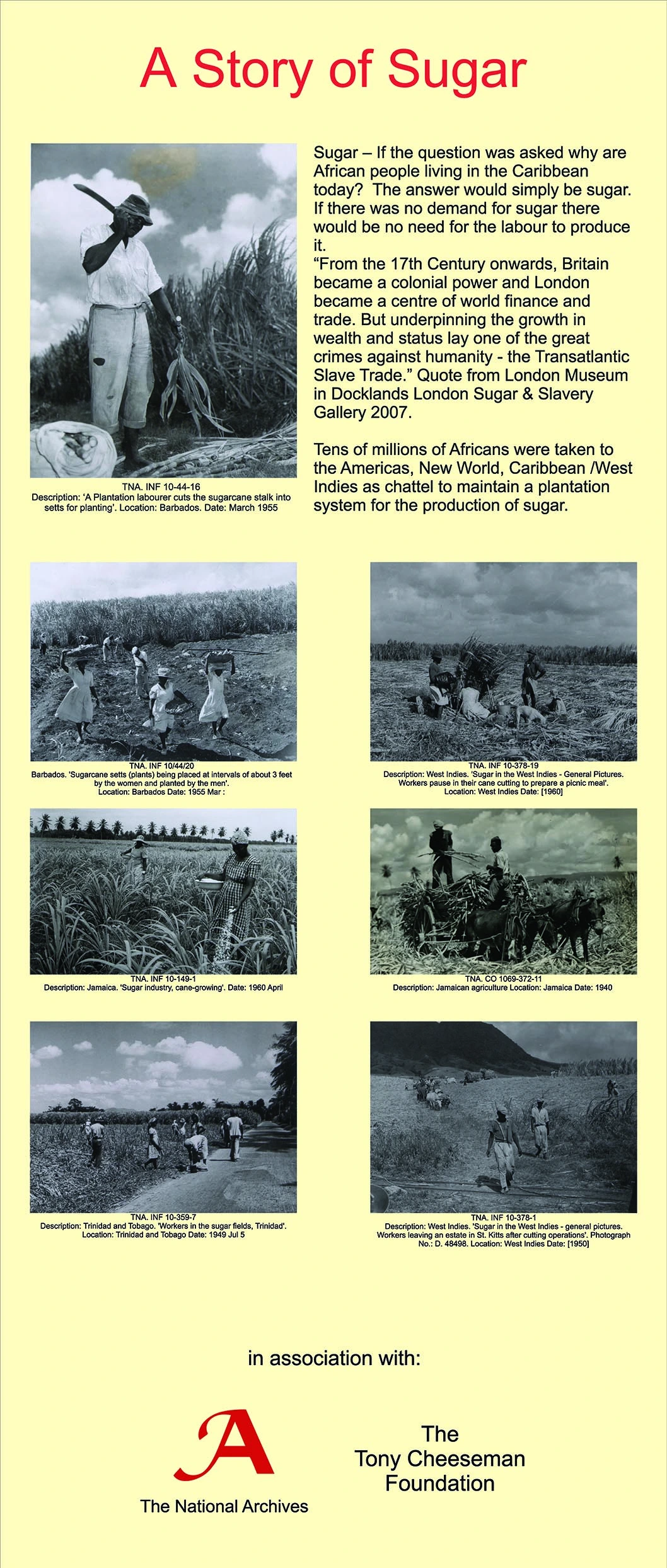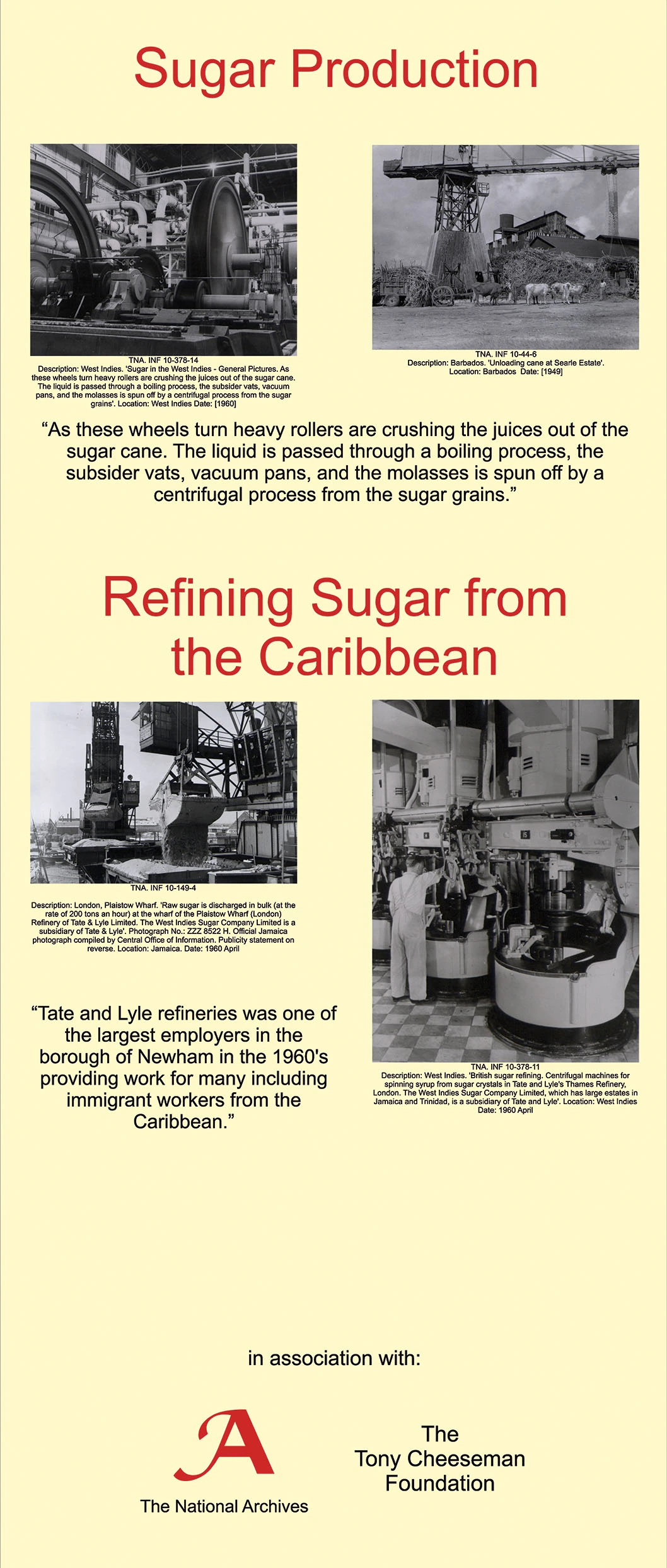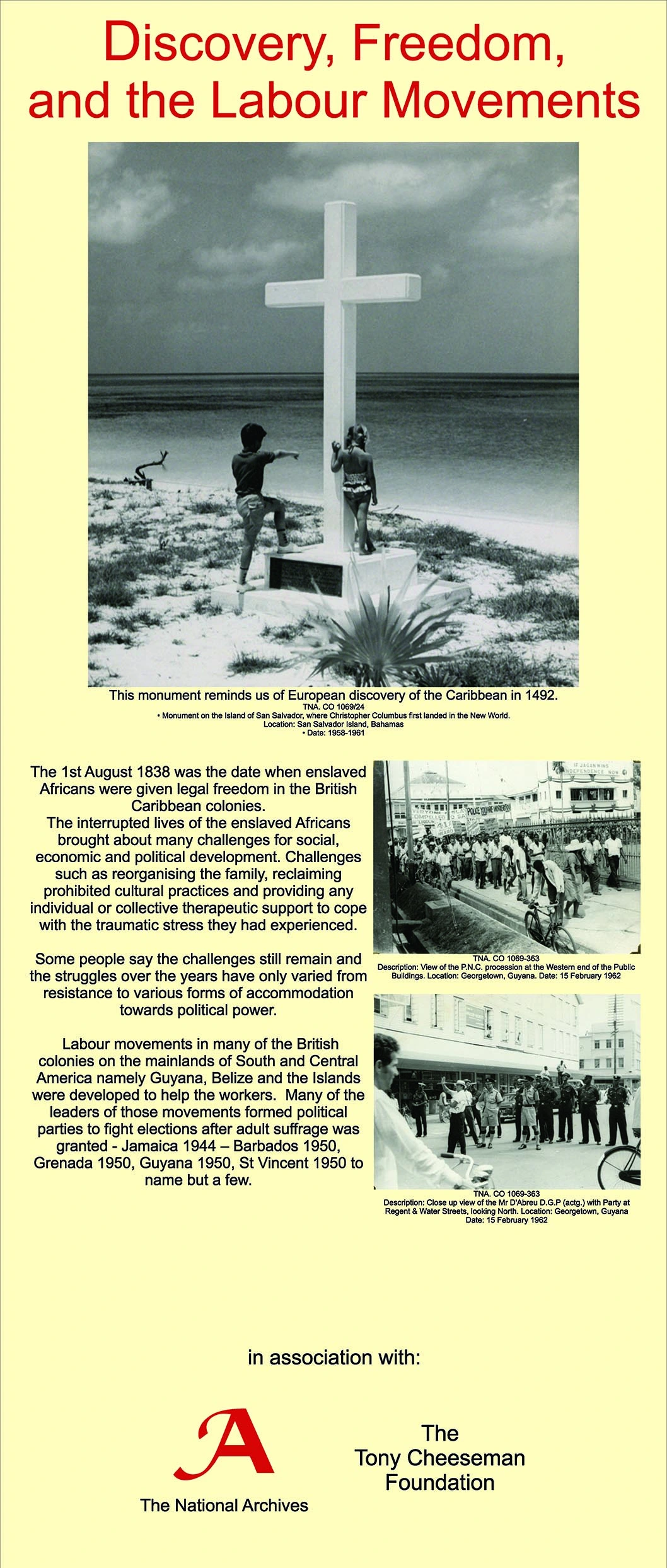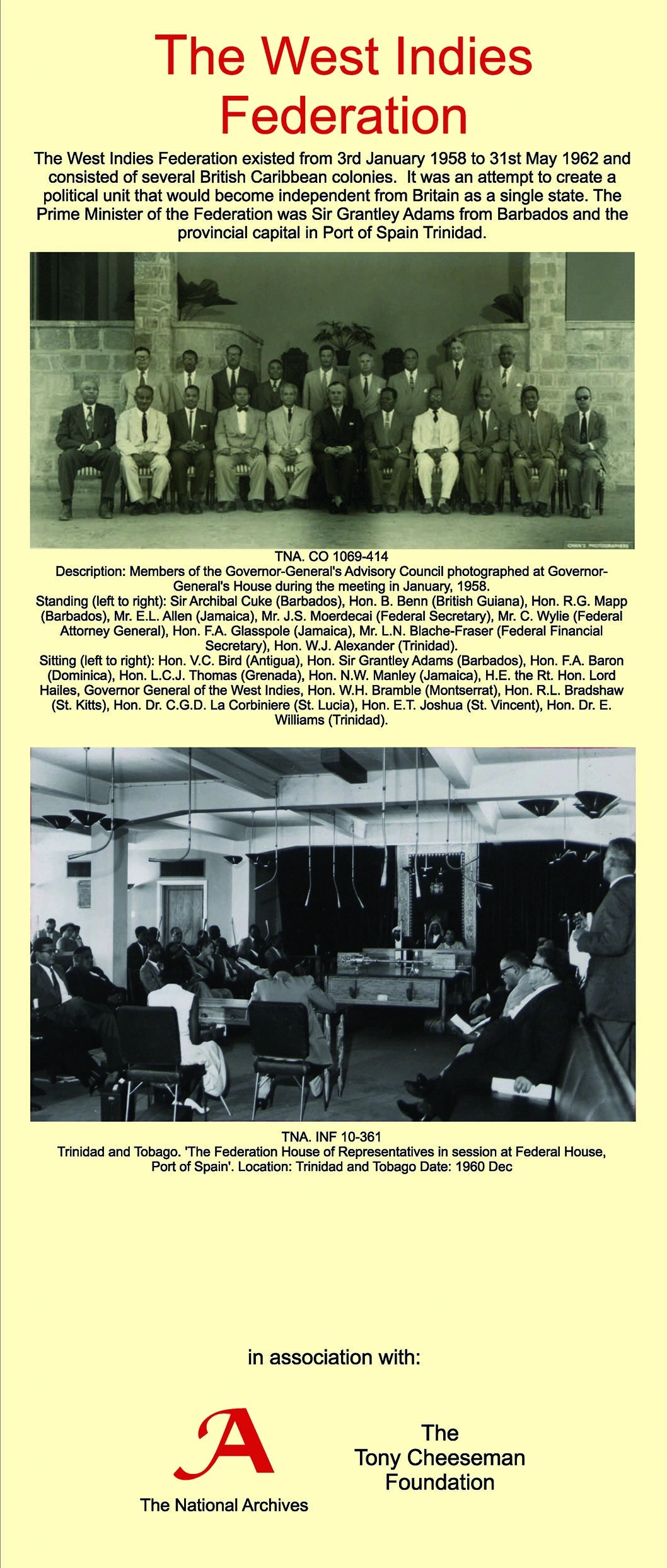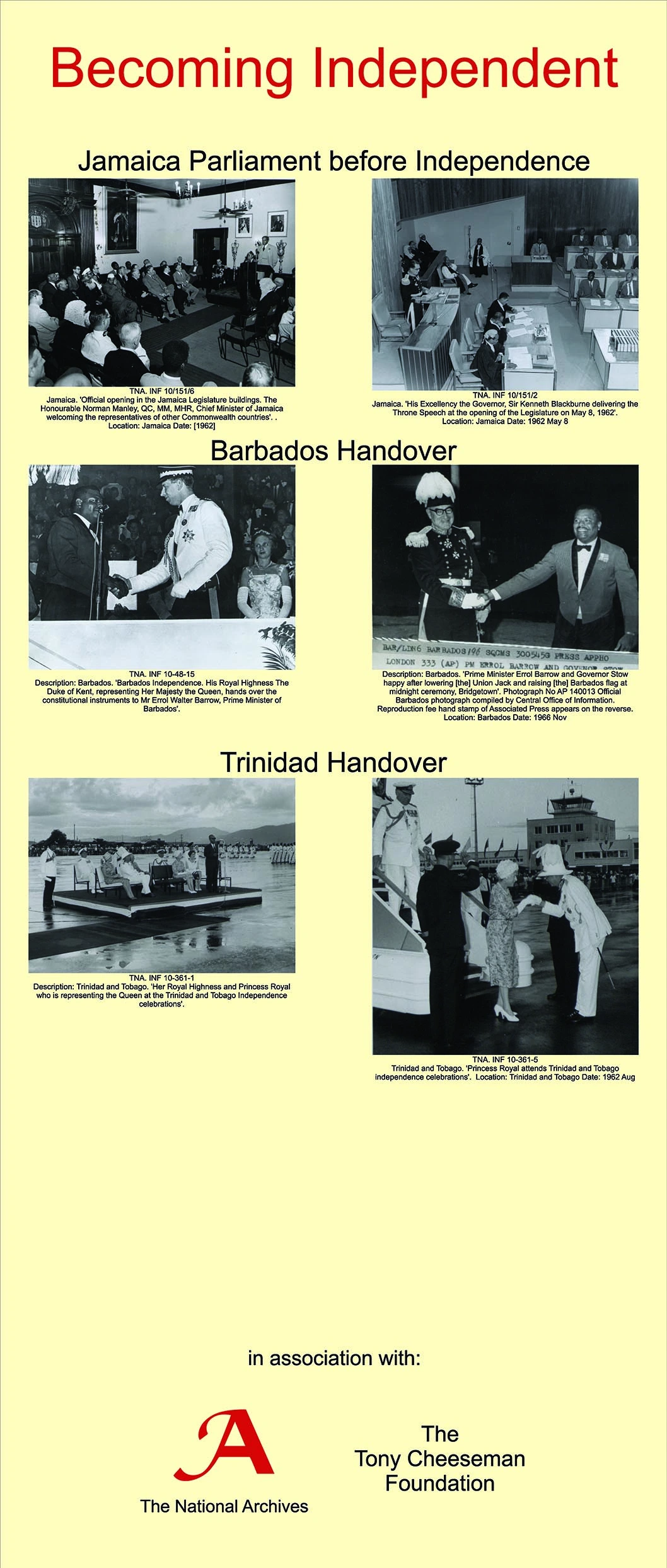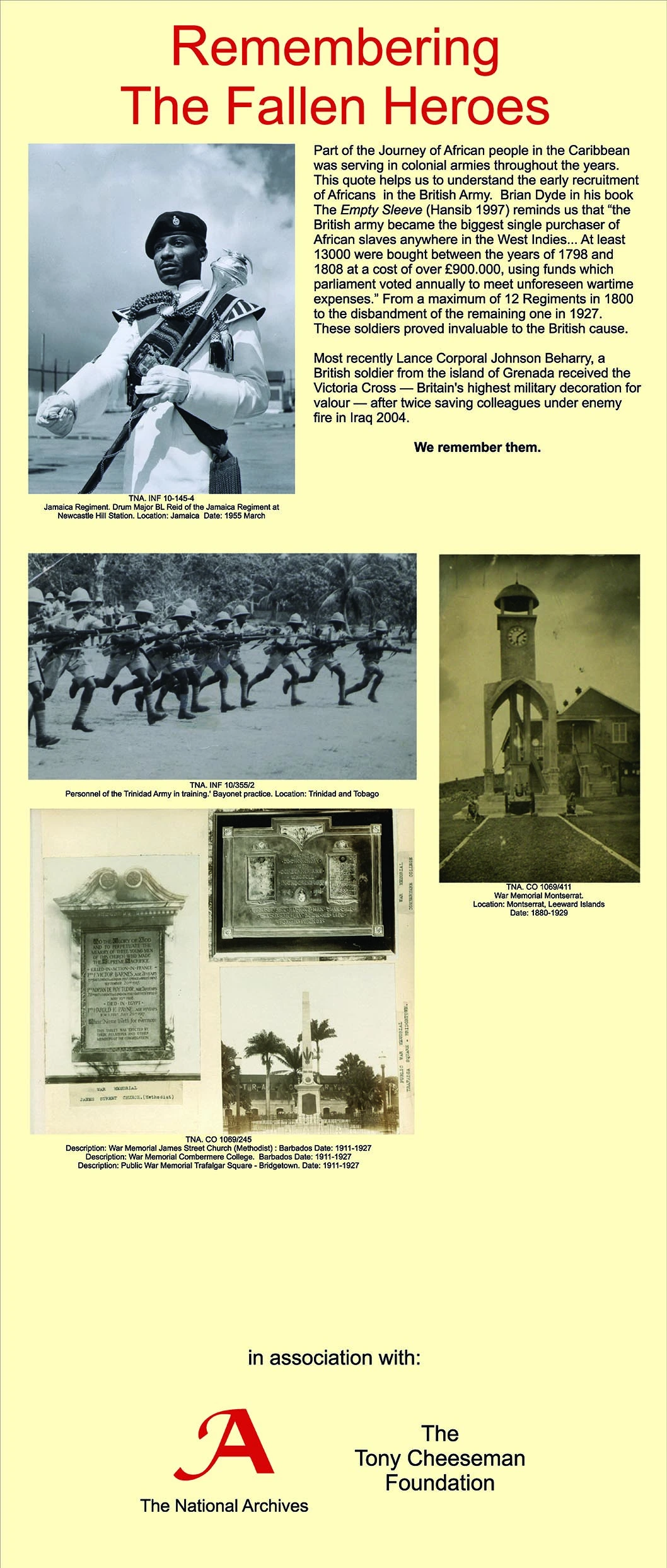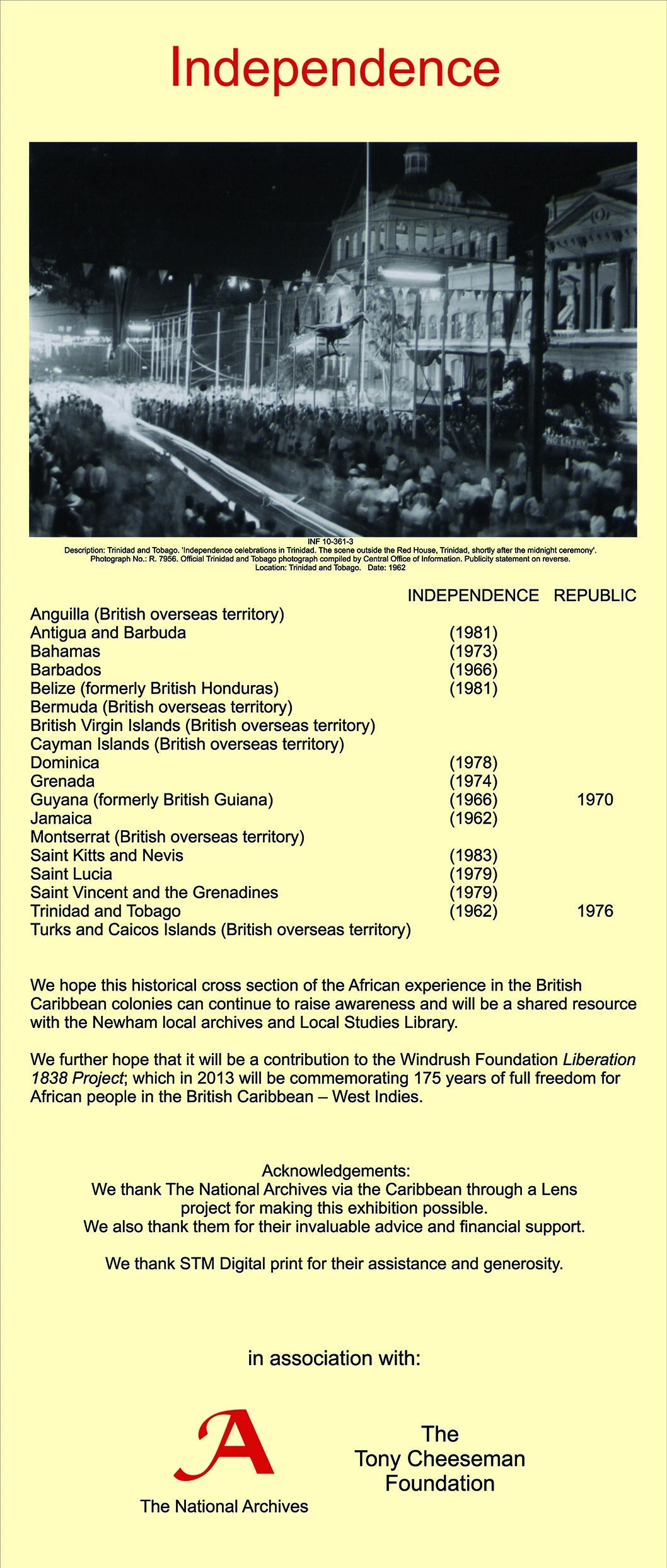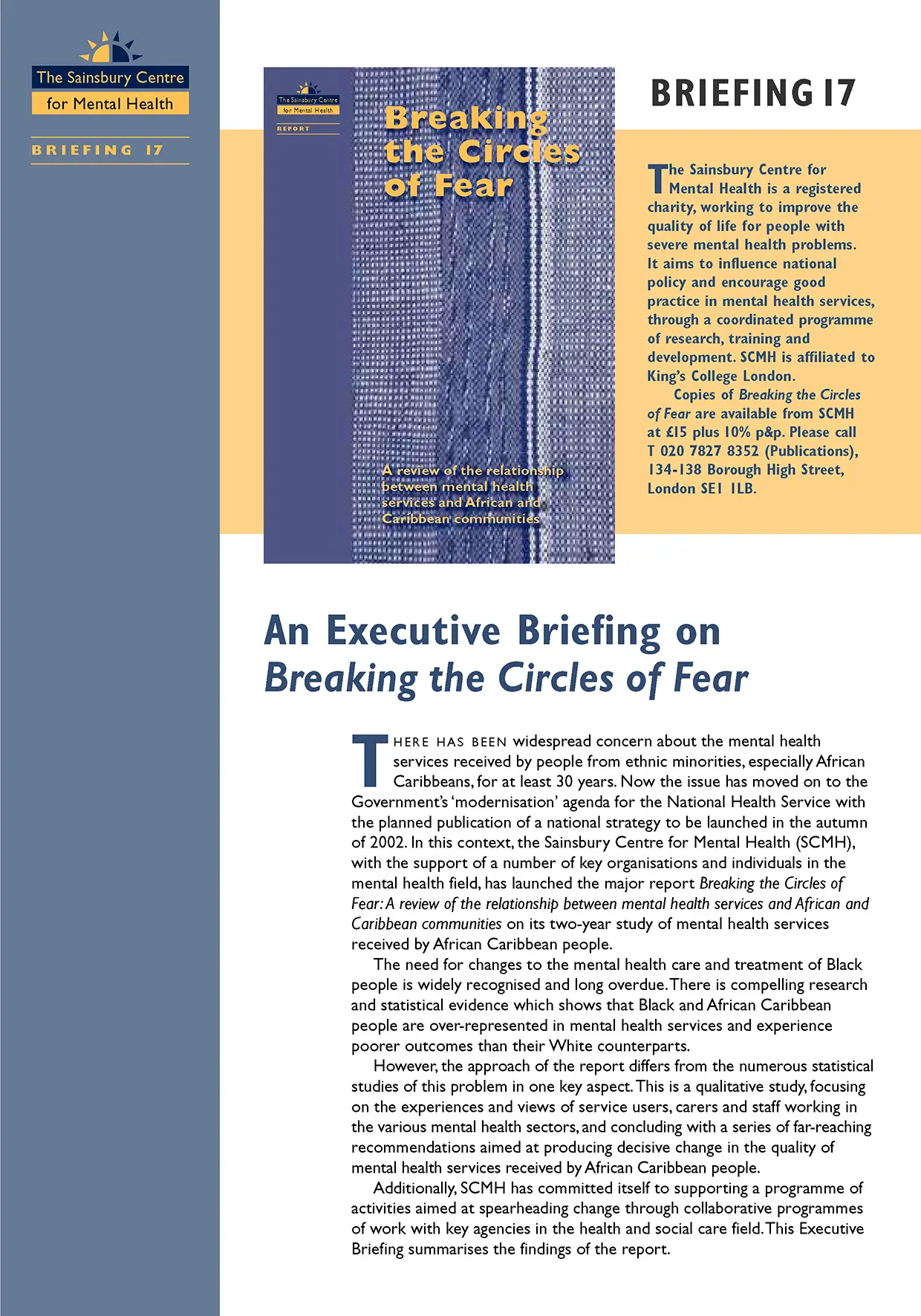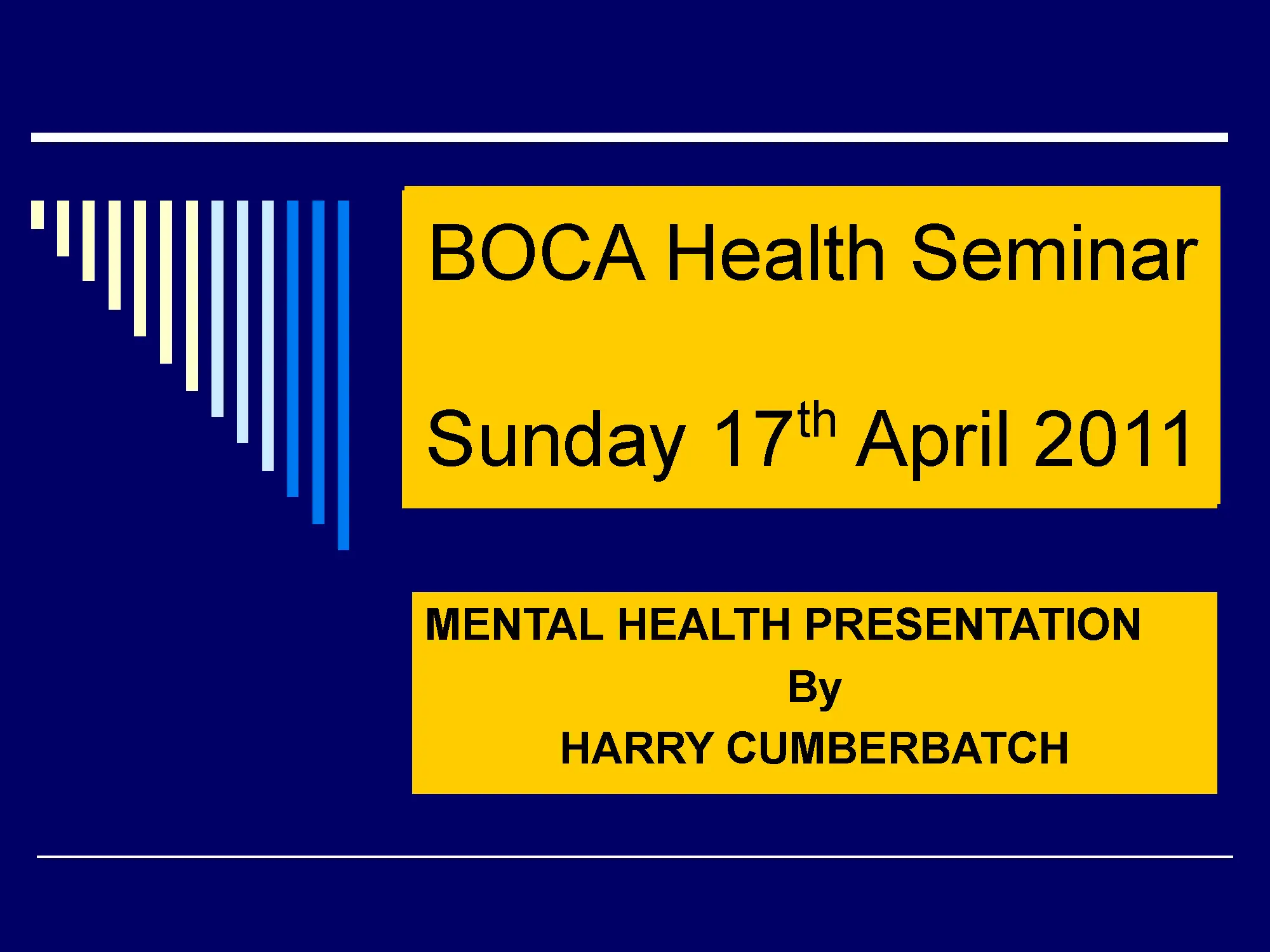Keeping busy
2004 – 2014
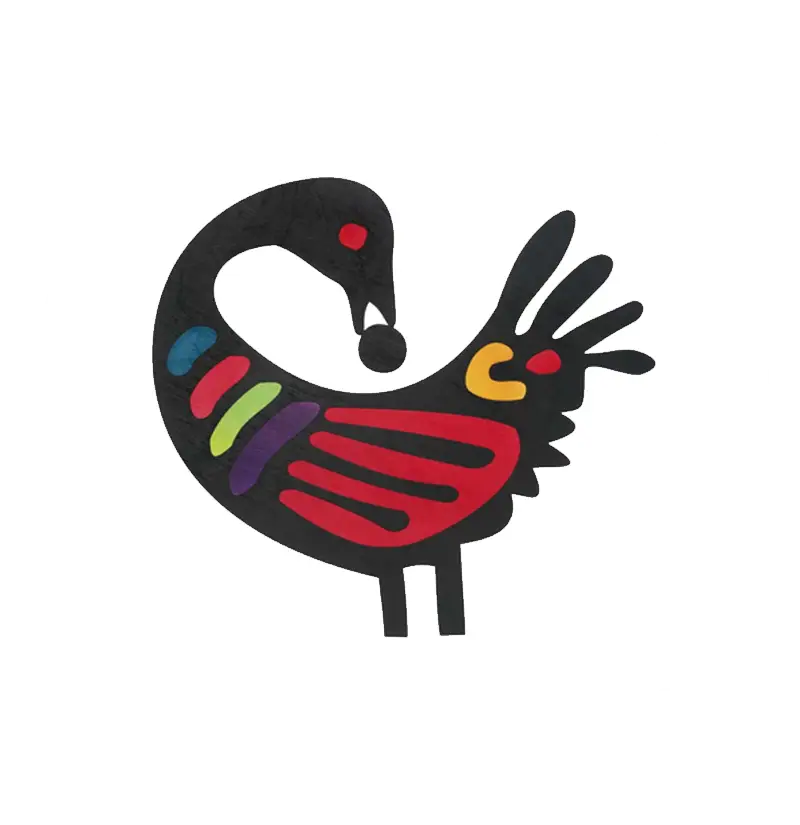
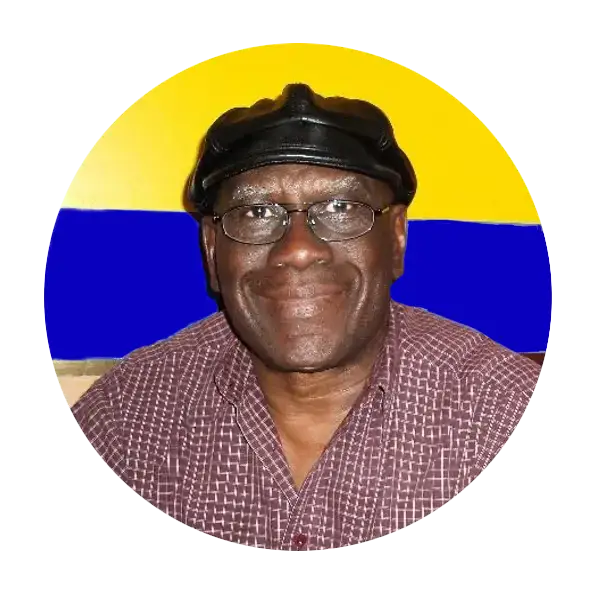

During this decade I stepped down as co-ordinator of THACMHO, contributed as a consultative member to the London Museum Docklands’ Sugar and Slavery Gallery and researched African History at the Tower of London. I also identified patterns of racism and imperialism in East London, co-founded the Tony Cheeseman Foundation, became a founding member of the African Heritage Forum and received a British Honours award for my work with Black mental health service users in Tower Hamlets.
From my experience the stigma of mental illness has been a major concern for service Users. Therefore, I am sharing a talk by Sidney Millin, a mental health presentation by myself and an executive summary of a report titled ‘Breaking the Circles of Fear,’ which I hope will help to combat the stigma.
I close the decade with my regular Very Important Event (VIE) and a reminder that my next post completes the journey.
The Decade started with a groundbreaking conference in Feburary 2004


Top left: Charlie Philips, Leonard ‘Baby’ Evelyn, Rudy Murray and Frank Gabriel. Bottom row: Winston Pinder conference chair and Bill Rolston a retired West India Dock worker.
After reviewing evaluation forms our Black History Committee identified there was an interest to hold a reminiscence event. Funding was obtained and we partnered with the National Archives Moving Here project and the Museum in Docklands to hold a conference on West Indian seamen who sailed to the London West India Docks in the 1950s and 1960s.
This event started a longstanding relationship for me with the Museum that have continued over the years.

The Jamaican producer, also called a banana boat regularly sailed to the West India Docks. Charlie Phillips the only surviving seaman from the conference worked on her as a Galley Boy. My condolences are extended to the families of Harrison Line Seamen Rudy Murray, Frank Gabriel, and Leonard “Baby” Evelyn and may their departed souls RIP.
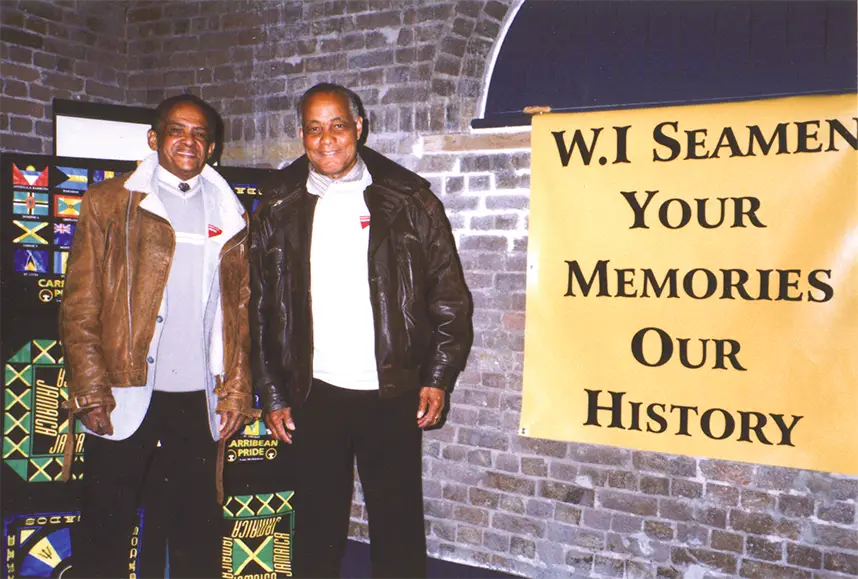
Thank You Letters
The late Philip Morgan (Spirit) presenting the High Commisssioner of Barbados His Excellency Edwin Pollard OBE with a copy of our Power Writers book.

A REMARKABLE ACOMPLISHMENT
In February 2004 the THACMHO executive committee held a meeting in the intensive treatment unit (ITU) at the former St Clements Hospital while the Chair was detained under Section 3 of the Mental Health Act.
The hour meeting took place in the manager’s office, with nursing staff stationed outside the door. It is very rare that a patient would be trusted enough to continue carrying out their civic duties in a hospital locked ward considering being assessed as a danger to himself and others. This meeting was important for the members to recognise that all things are possible. And just to mention that after the Chair was discharged from hospital he promptly resumed his responsibilities with the organisation.
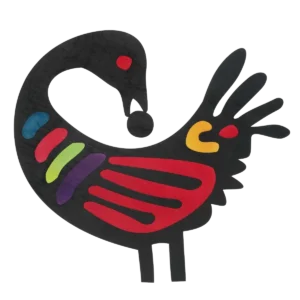
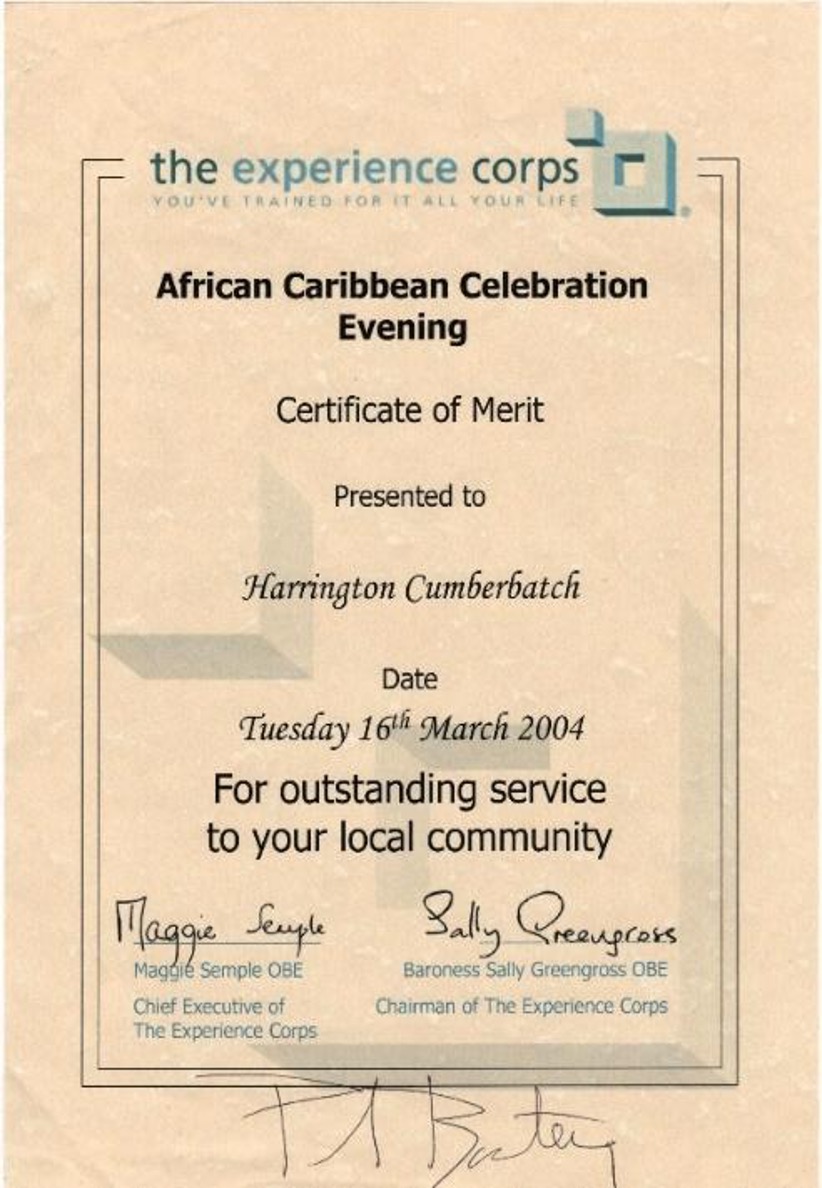
The Rt Honourable MP Oona king spoke about our organisation in the House of Commons debate called ‘Struggle against slavery’. She quoted from our Power Writers booklet and her full speech can be read in the Hansard records, 14th October 2004.
Here is a tribute from Rt Honourable MP Oona king to THACMHO.
For Black History Month 2004 we launched the Reminisence Conference Report at the Museum in Docklands. Here is the publicity and the front cover of the Tower Hamlets BHM programme.
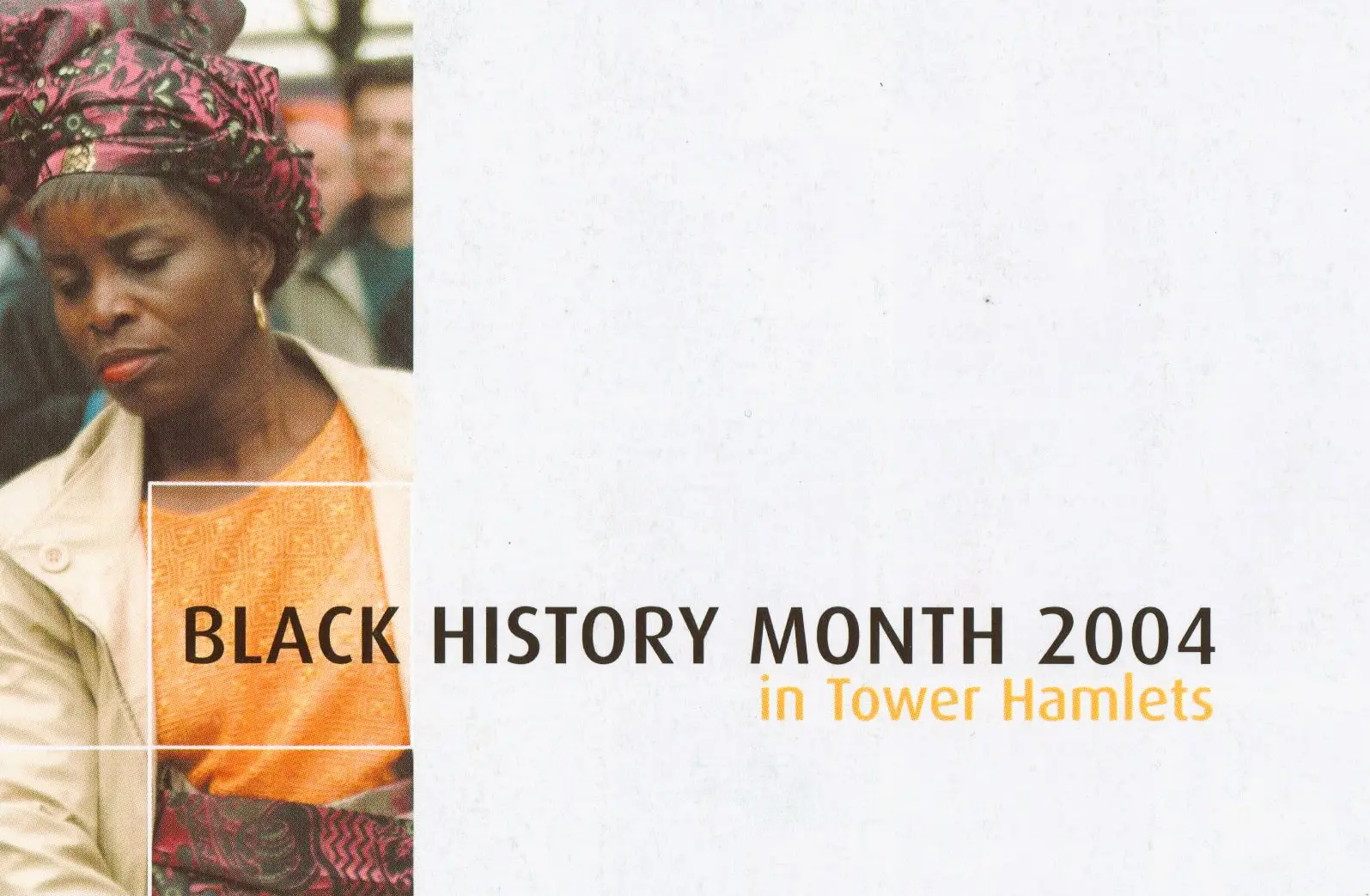
Please take a look at the Full Conference Reports
Hackney, Newham and Tower Hamlets boroughs working together for 2005 BHM
In 2005, I was a member of a cross borough committee that organised an East London Black History Month programme, which brought together participants from Tower Hamlets, Newham, and Hackney.

THACMHO Black History Month 2005
THACMHO’S contribution to BHM 2005 saw the launch of the 2nd edition of the Power Writers book, a Black History exhibition and a Power Writers walking tour.
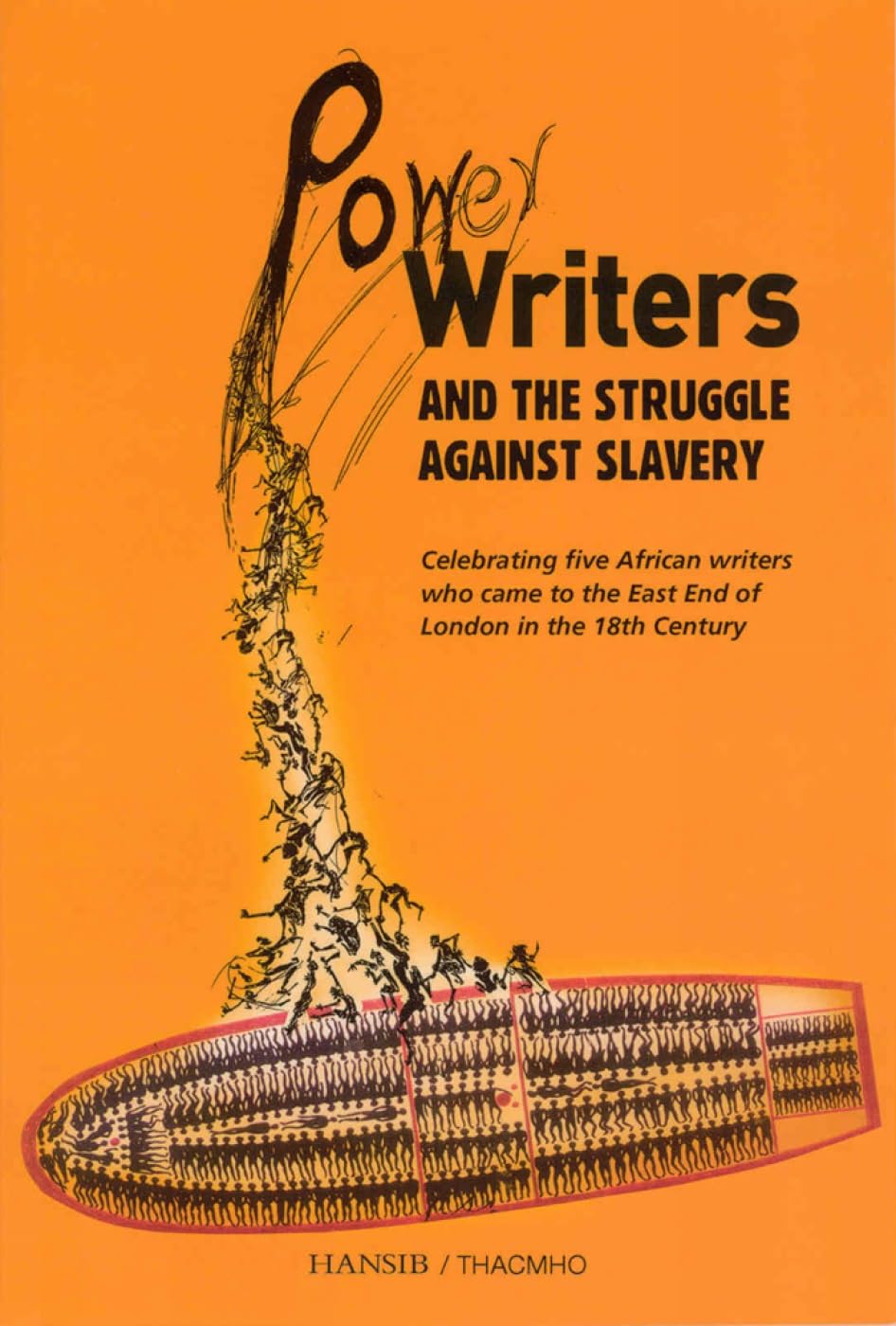
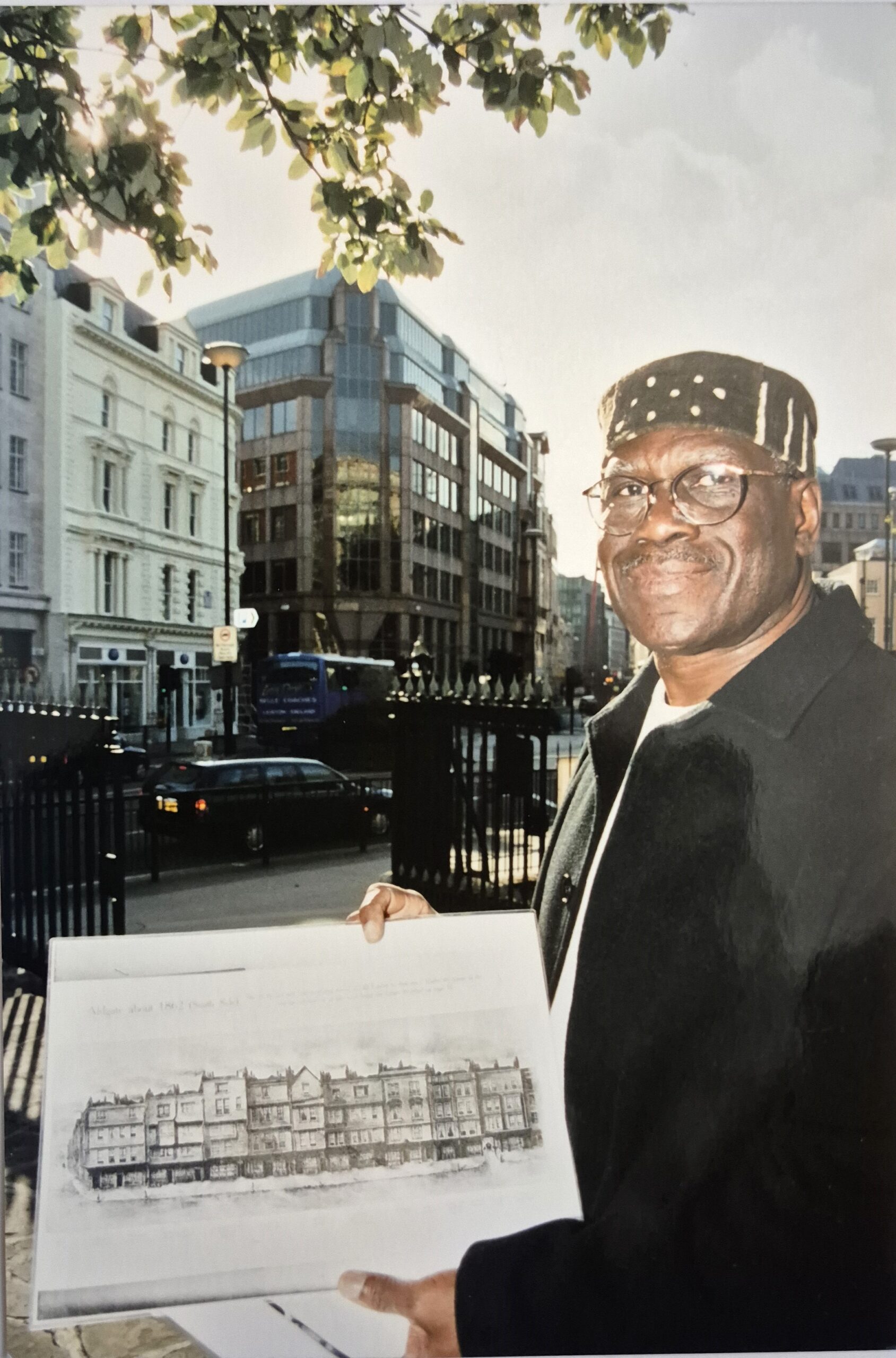
Leading a Power Writers walk at the former Bell printer site in Aldgate, where Phyllis Wheatley’s first book was printed in 1773 and is now a modern office space.

Harry inviting participants on the walk to the exhibition and book launch. In the background is the Whitechapel mission, where we held our meetings. The Whitechapel Mission was identified as the site of the White Raven Tavern where African people met in the 18th century.
Left to right: Philip Morgan, Fabián Tompsett, Beverley Clarke, Harry Cumberbatch, Sadie Parkes, Barrington Johnson, Jennifer Jones and Sidney Millin at the launch of the revised edition of Power Writers during BHM 2005.

Some of the audience.
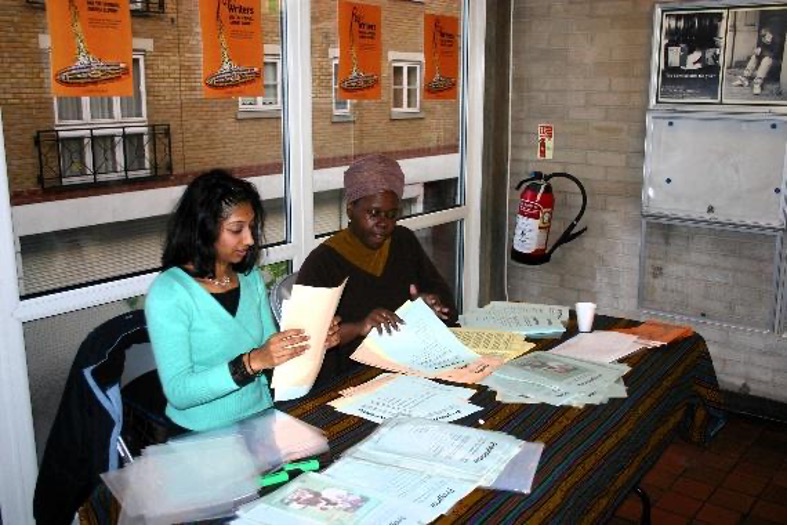
Volunteers helping out at reception.
The reminiscence conference (held back in 2004) led to a CD teaching pack for schools in Tower Hamlets and was launched by the Humanities education centre in 2005 at the Museum in Docklands.
Rudy Murray, Leonard Baby Evelyn and I being interviewed by documentary maker Claude Graham for Barbados TV
18th Century Racisim and 19th Century Imperialisim.
During THACMHO’ research we found these interesting articles on racism in the 18th century and Imperialisim in the 19th Century.
The Morning Post, 30th December 1786
This article, written in old English, highlights the challenges faced by the African community in London’s East End as they considered relocating to Sierra Leone or not.
Modern english translation.
In the 18th century, Africans in East London organised themselves to oppose both racism and the Atlantic slave trade. Scholars such as Peter Fryer, Professor Hakim Adi, along with our publication Power Writers and others, have documented the activities of a prominent group known as ‘The Sons of Africa.’
The White Raven Tavern in Mile End Gate, Whitechapel, is thought to have served as a meeting place for Africans during the 18th century. In the 21st century, the site—now the Whitechapel Mission was where THACMHO Black History committee also held their meetings.
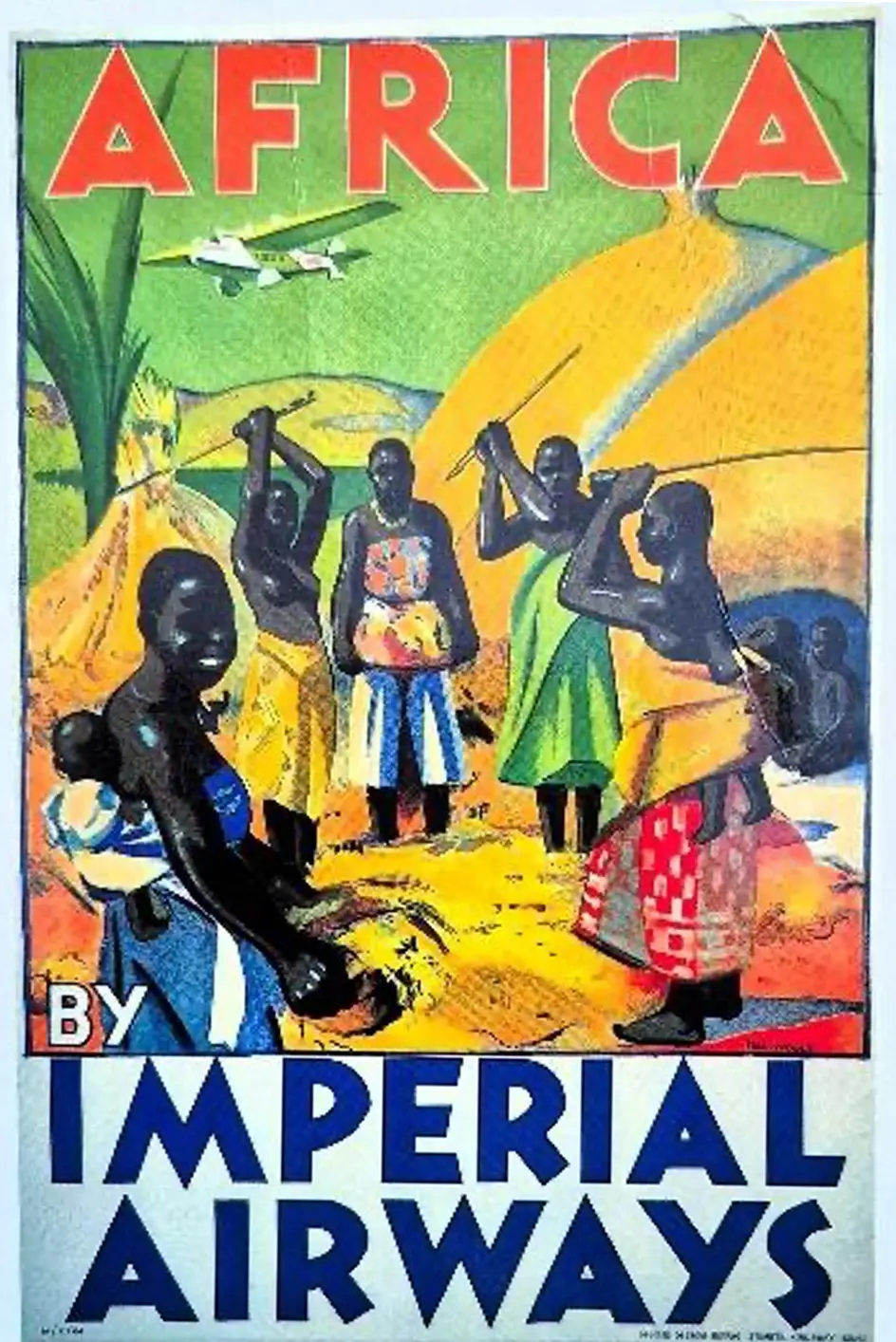
A post card by artist Hal Woolf which is part of the British Airways museum collection.
Cecil Rhodes’ view of British imperialism.
Health Through History goes to the Tower
After reading a copy of Power Writers Ian Coles from the education services of the Royal armouries invited us to research the African presence at the Tower of London. This leaflet was prepared for a Black History Month event launched at the Tower in 2005..



Sidney, Philip and I taking in some refreshments at the Launch.

Some of the guests.

Phillip Morgan addressing the guests.

Whilst carrying out research for the booklet in the Tower of London I was surprised to see Jamaican soldiers ceremonially guarding the Jewel House. I hastily went out to purchase a disposable camera and came back to capture this rare moment.

Honored for my Community work
I was honoured in 2006 to receive a MBE for my community work in Tower Hamlets in the Queen’s Birthday Honours.
Recognised for: For services to African and Caribbean People with Mental Health problems in Tower Hamlets, London.


My investure at Buckingham Palace

Her Majesty the Queen asked me to extend her well wishes to the members of THACMHO, which I was happy to convey.
Winding down
As part of my exit strategy, a community consultation event was held on 6 April 2006 at the Bow Methodist Church. It was well attended and our facilitators were Sandra Griffiths MELLOW Service Development Manager and Marie Gabriel a mental health consultant. “Our Changing Environment” was the theme and provided valuable context for the workshops, which reflected on past experiences and planning for future growth.
THACMHO’ business plan was also discussed and here are the community consultation recommendations.
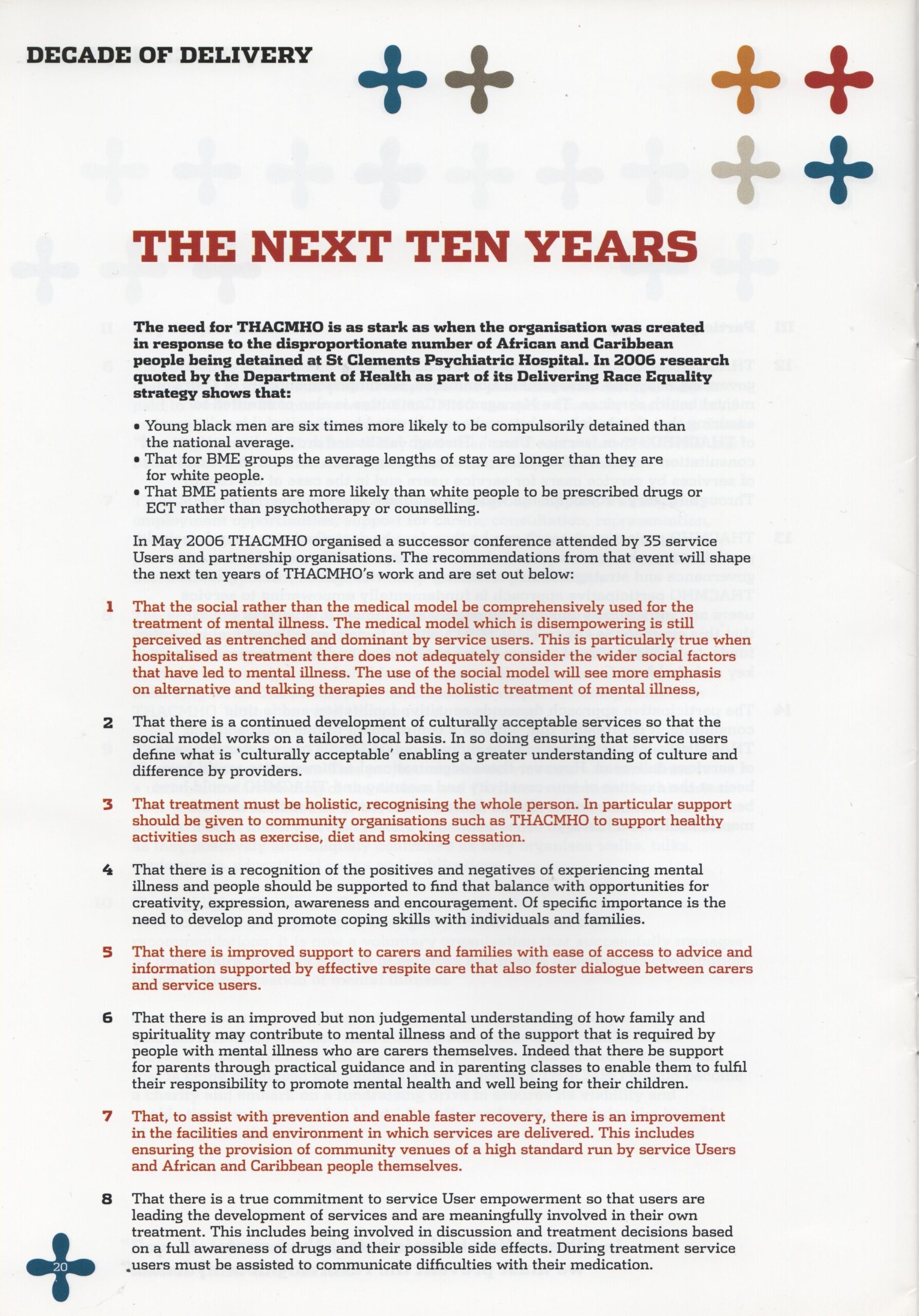
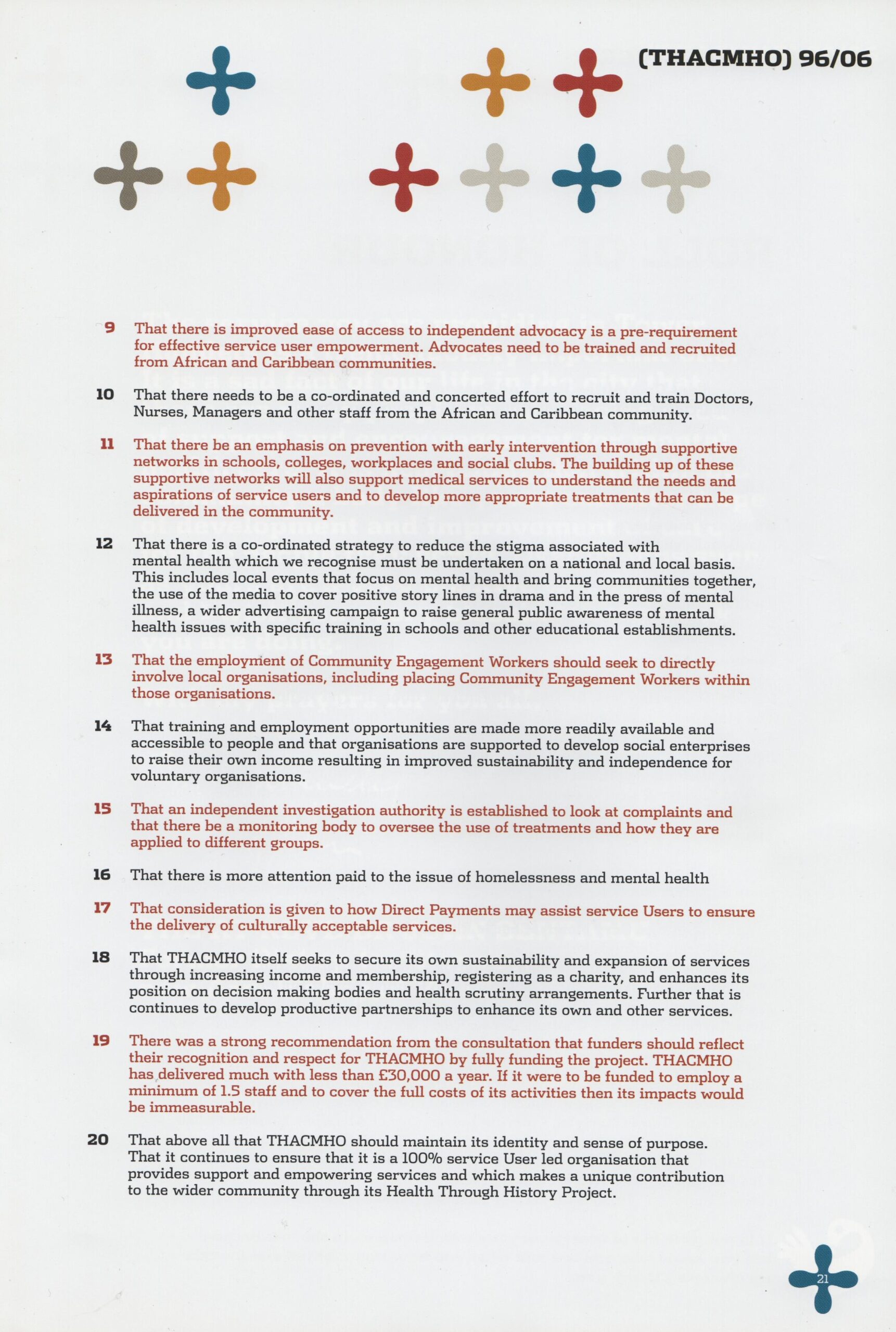
Thanking our Sisters


Some members of Asumjwe from left to right – Sadie Parkes, the late Ruth Riviere, Macia Mccleod MIND Project worker and the late Joyce Avis.
Asumjwe by the side of THACMHO gave us strength.
My retirement party.
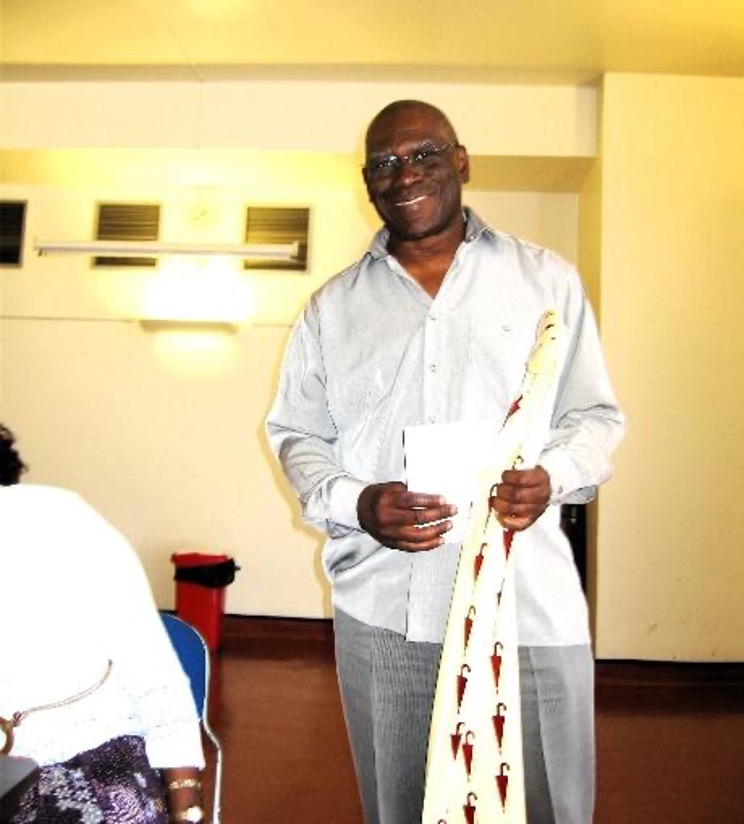
Saying a few words and showing appreitaiton.
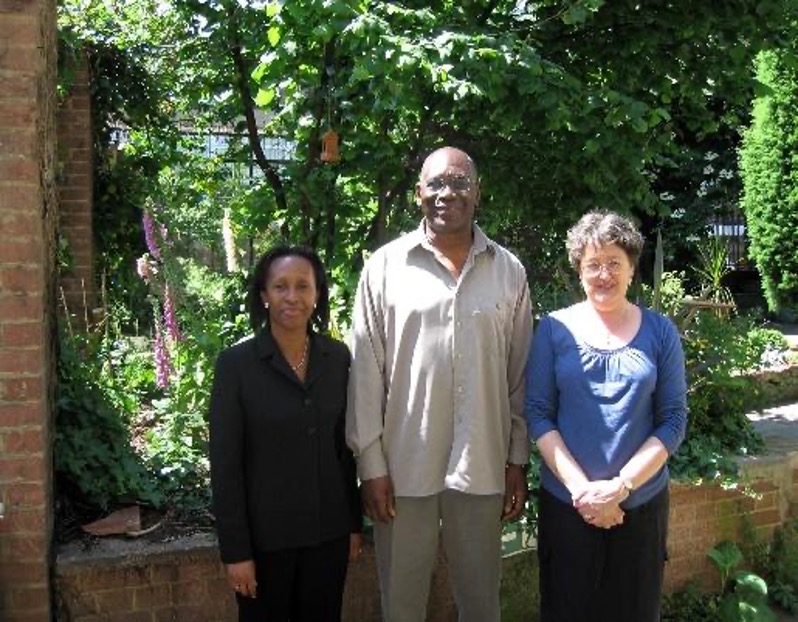
On my left Elizabeth Baylis, om my right Janet Cambell.
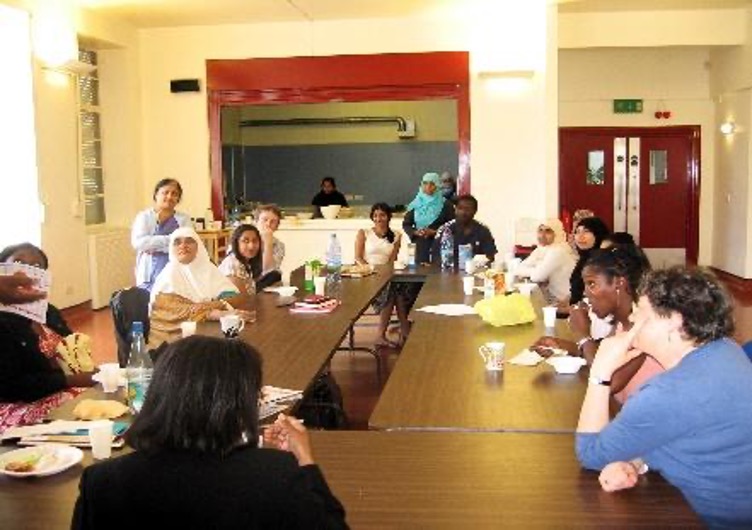
Enjoying a farewell lunch.
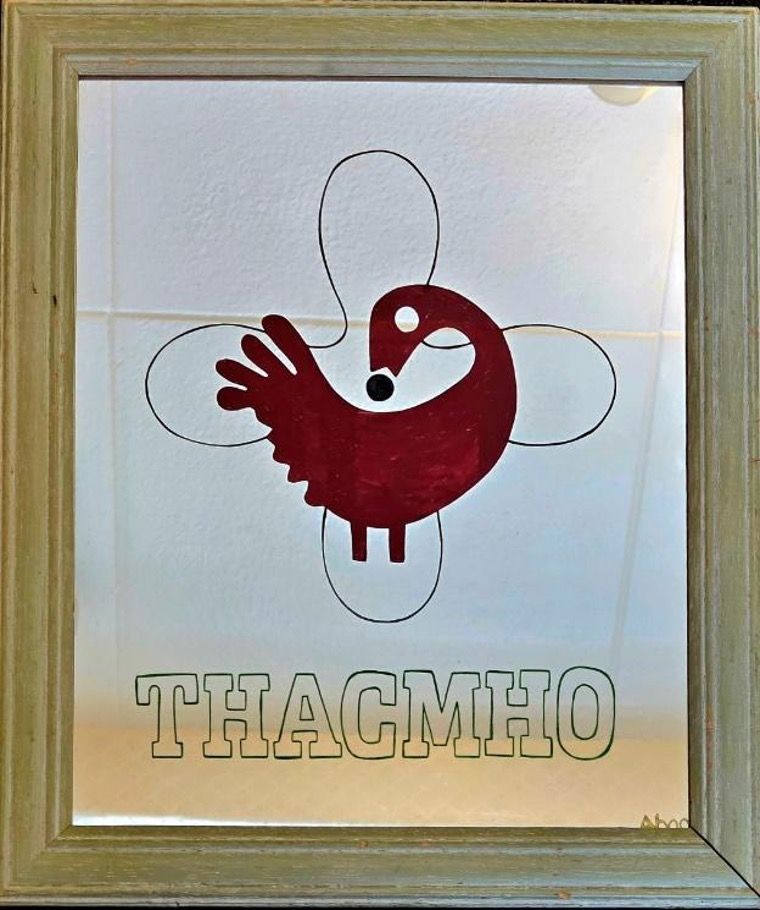
THACMHO commisioned cultural artist Dr. Aboo Ratata to design my farewell gift, featuring Tabono and Sankofa symbols integrated thoughtfully within an elegant mirror frame.
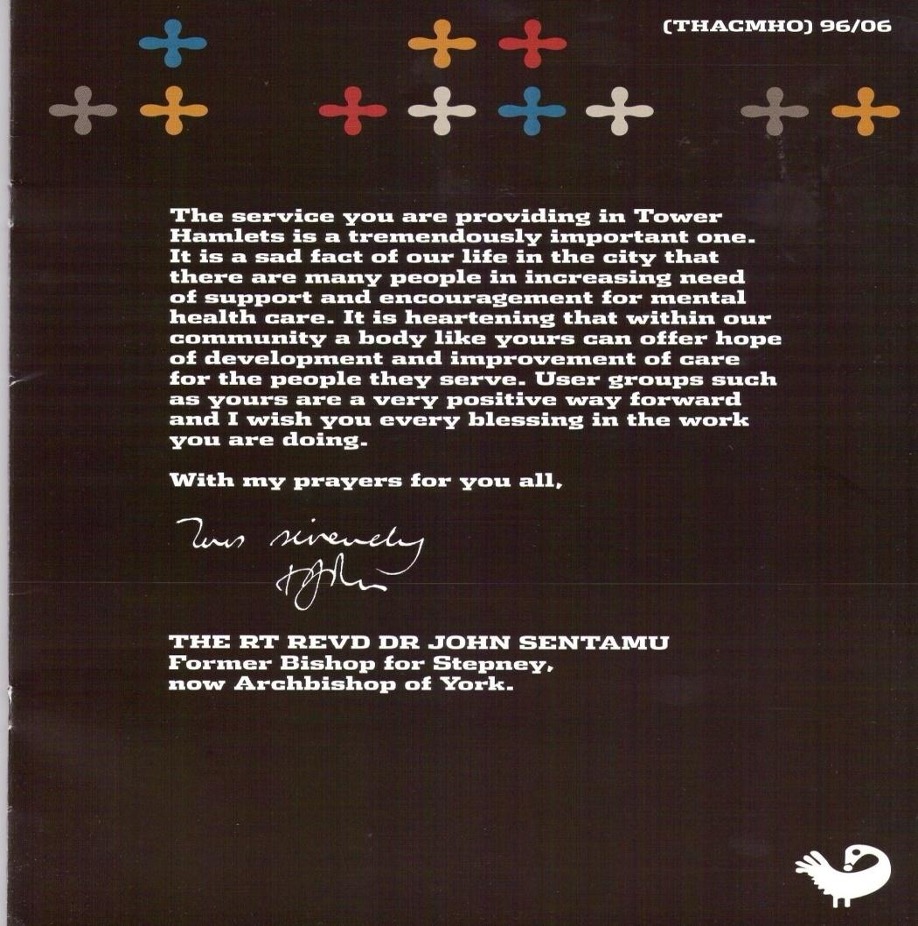
The former Archbishop of York the Rt Revd Dr John Sentamu paying tribute to THACMHO.
Abridged from a 2005 Social Action for Health Article.
In East London there is grave concern about the high numbers of African and Caribbean people who use mental health services. There are no quick solutions to this situation that shadows the lives of so many people, arising as it does out of deprivation and exclusion. Harry offers a model of how this might be turned round. He focuses on building up people’s skills and confidence, creating opportunities for people to learn new skills and to take the risk of testing them out.
Through a steady and incremental process, Harry has created an environment in which peoples’ self-esteem has grown, a mutual support network developed, social capital increased. He always work at a pace members can keep up with, never running ahead, always seeking to make himself redundant.
Elizabeth Baylis – Director of Social Action for Health
A Decade of Delivery
This is a summary of all the work that THACMHO had achieved in my Ten years as Development worker.
London, Sugar and Slavery
In 2007, the British Government recognised the 200th anniversary of the legislation ending the Trans-Atlantic Slave Trade. The Heritage Lottery Fund provided over £14 million to support more than 165 projects commemorating the bicentenary.
The London Sugar and Slavery Gallery were among the projects that benefited, with the THACMHO Black History Committee playing a key role in securing the funding for the Museum in Docklands application.
In June 2006 I was invited to join the Museum in Docklands commemorative committee. I accepted under the conditions that the committee needed to recognise that African Empires and Kingdoms existed before European and Arab invasions. I suggested that it was necessary for the gallery to explore the psychological damage and post-traumatic stress factors on a people who became property to Europeans during the Trans-Atlantic Slave Trade and were forced to adopt the traditions and cultures of their owners. I further suggested that in order to ensure community take up of the Museums efforts there needed to be an effective community strategy which had to be built into the process.
THACHMO contributed significantly to the Museum’ successful bid to raise funds for the London Sugar and Slavery Gallery. The Chair wrote a letter of support and THACMHO made a presentation to reflect the museum’ involvement with the community when the Heritage Lottery Fund visited the museum as part of the application process.
After 15 months of dedicated work, including the process of choosing a suitable name, the London Sugar and Slavery Gallery opened in November 2007. For the launch weekend, the committee decided to cover the Milligan statue at the museum entrance.

Photos by Harry Cumberbatch.

Here are some photos I took at the opening weekend of the Launch. Chief Adeyela Adelekan from the World Orisa tradition and cultural organisation, blessing and evoking the spirits of the ancestors with the throwing of Cowrie shells.
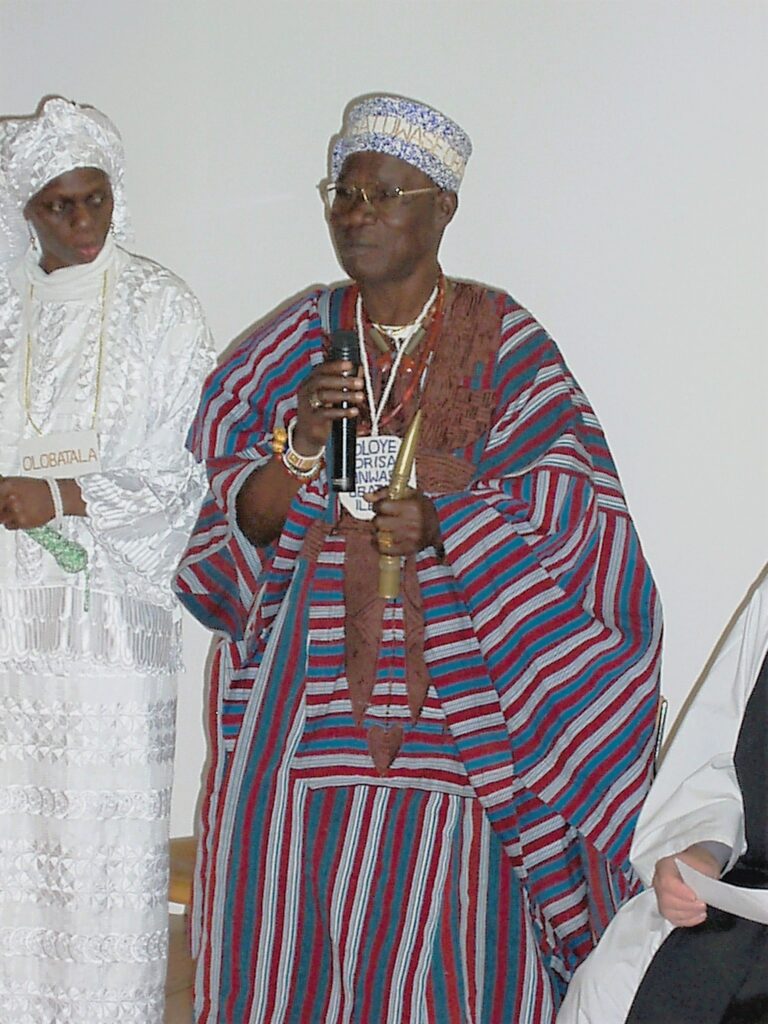
Pouring Libations.
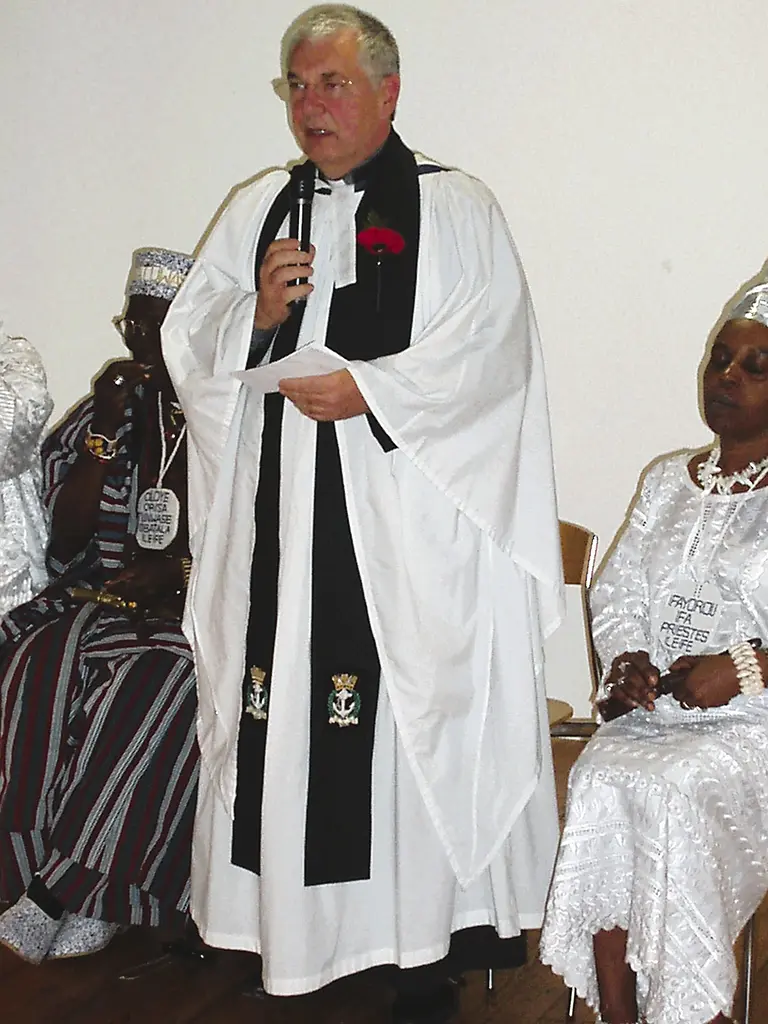
The Christian Revd of the local diocese blessing the opening.

Cowrie shells

Pouring Libations.

Visitors young and old enjoying the launch events.
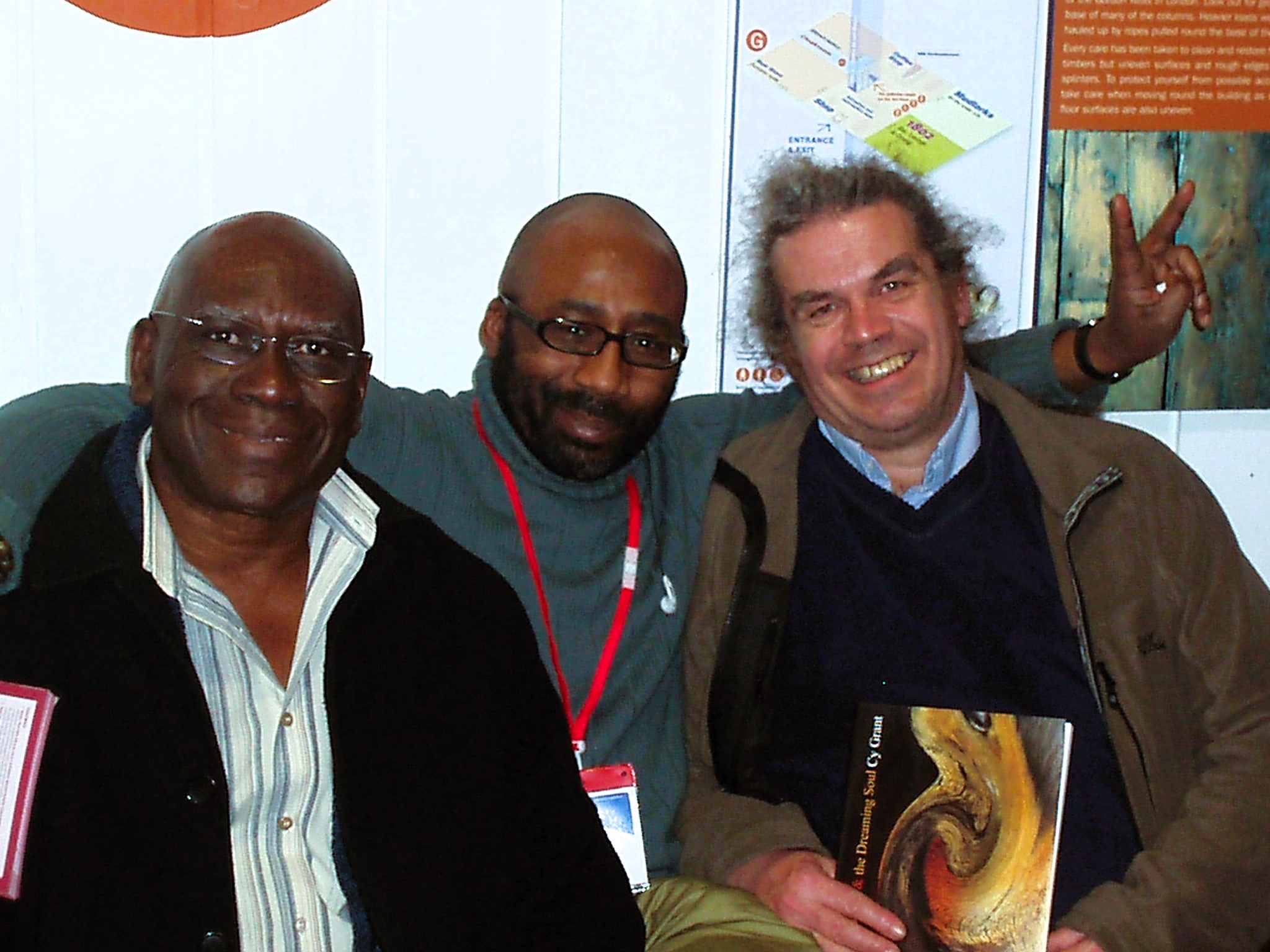
Harry, Phillip and Fabian.
This Gallery Reader (Guide) was given free to visitors.

The Back cover reads:
From the 17th Century onwards, as Britian became a colonial power, London itself began to grow in importance as a centre of world finance and trade. But underpinning the growth in wealth and status lay one of the great crimes against humanity – the transatlantic slave trade, For decades London’s role in the trade was ignored . Instead, the fingers of shame was pointed towards the port cities of Liverpool and Bristol and although London had indeed been involved in the trade its role was seen to be insignificant.
This we now realise was a myth, but it was a convenient myth for the Britons of the 19th century who were also intent in justifying Britain’s imperial position and her role as ‘policeman of the world’. Behind this myth, though, lay a horrific truth. In the accumulation of huge wealth in Britian, societies and communities throughout Africa were disrupted beyond repair; tens of millions of people were displaced and transported; millions were exploited, tortured and killed.
These events, from the 16th to the 19th century, have marked Britian’s relations with Africans and Africa from then to now.
I contributed to the London Sugar and Slavery Gallery Reader by emphasising the significance of utilizing technology to educate visitors about both Britain’s gains and Africa’s losses resulting from the Trans-Atlantic slave trade. I am currently engaged in discussions with the museum’s senior curator regarding concerns over modifications to the original 2007 gallery concept.
The Museum in Docklands press release on future plans.
THACMHO 2006 concept plans for the London Sugar and Slavery Gallery and evaluation document on the 2007 Bicentenary commemoration are available.
Merseyside Martime Museum
I was honored to receive a personal invitation from the Merseyside Maritime Museum to be their guest at the opening of the International Slavery Museum which sits inside the Maritime museum, in 2007.
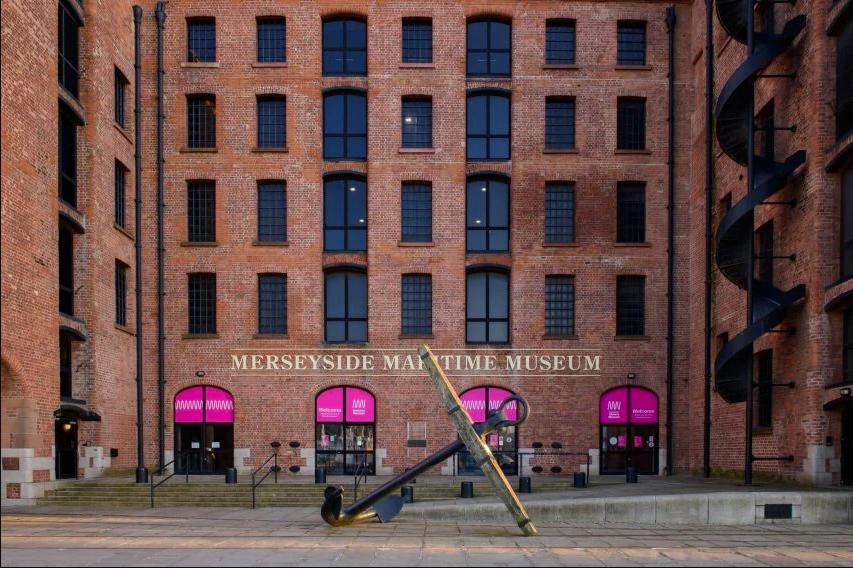
Merseyside Martime Museum.
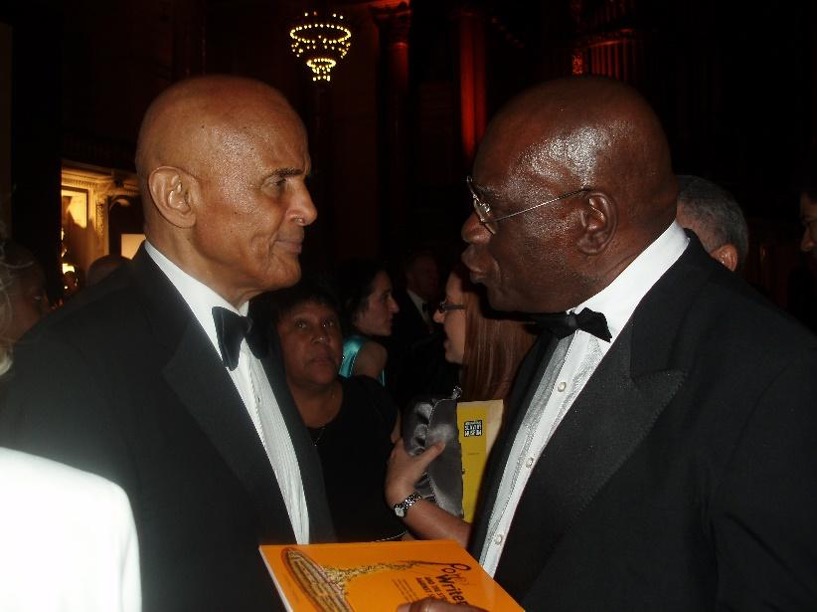
Among many international dignitaries was the late Harry Belafonte, also a Patron of the museum and who kindly accepted a copy of our Power Writers book.
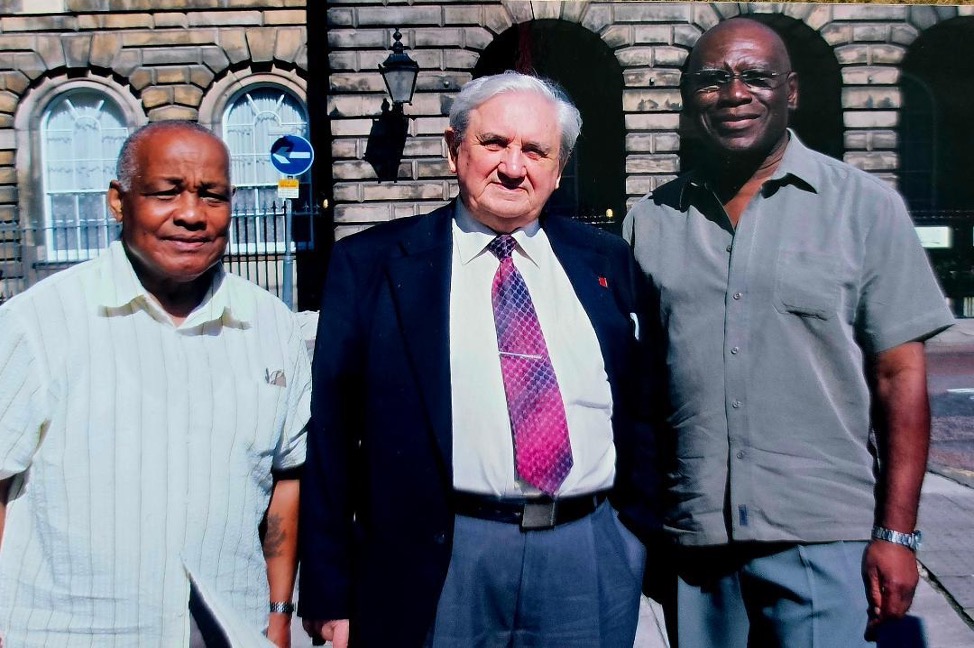
Whilst visiting Liverpool I took the opportunity to meet with Rudy Murray one of the seamen who took part in our Reminiscence conference in 2004 and met Captain Cubbin author of the book Harrisons of Liverpool -A chronicle of ships and Men 1830 – 2002. He was invited but unable to attend the reminiscence conference but his book and knowledge was instrumental in our research for the conference.
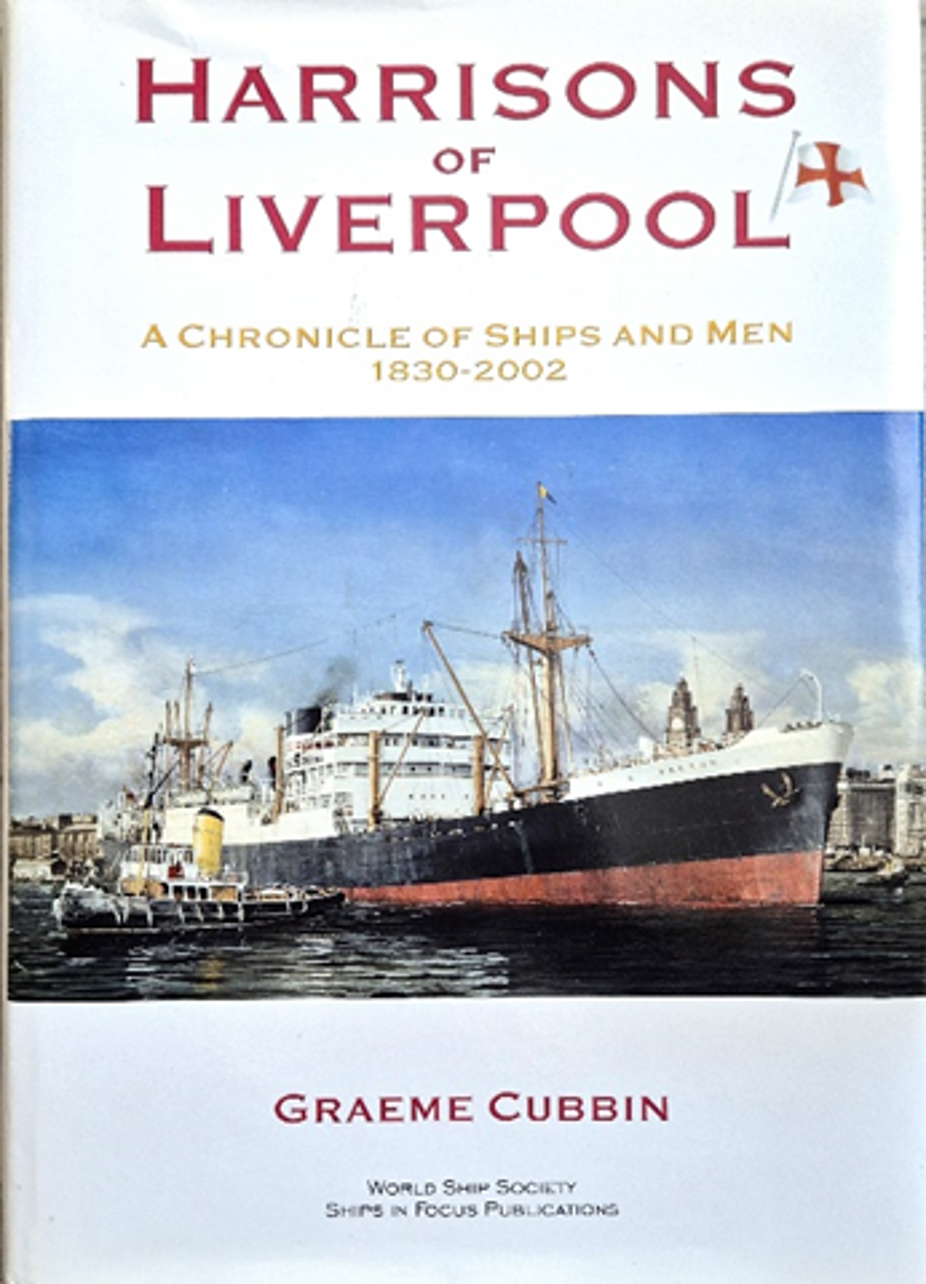
Following on from the success of the leaflet ‘Black History at the Tower’ . THACMHO and I (In my retired/advisory role) continued working with the Royal Armouries and produced the booklet ‘African History at the Tower of London’.
In February 2008 THACMHO launched African History at Tower of London at the Whitechapel Idea store.

The Chair Hazel Roach welcoming the Mayor.

Some of our guests.
THACMHO Summer edition newsletter reporting on the launch.
My first and only modelling experience, being photographed with the admistrator of the NHS Mellow campaing on their ‘Creating New Pathways to Well Being’ publicity.
Honoured to speak at this Black networking event.
The Tony Cheeseman Foundation
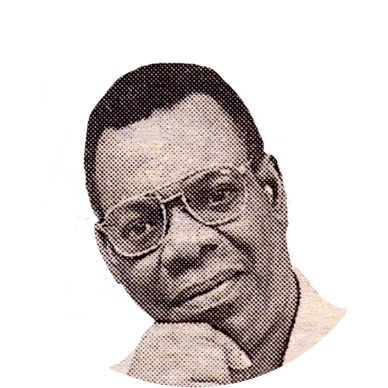
Tony Cheeseman 1944 – 2009
My close friend from school days, Tony Cheeseman, who, like myself, came to England in 1964 before ultimately fulfilling his dream by returning home, passed away in 2009. His funeral was commemorated by the Global African Congress UK in London, where I was honoured to be asked to deliver his eulogy.
Some of Tony colleagues came together and worked with the Newham Association for Prostrate awareness organisation to hold 3 events in his memory. Further information on how the group progressed and became a Foundation can be found at it’s legacy website:
Community Champions
In 2011 the Windrush Foundation marked its 15th anniversary by choosing to celebrate eight individuals who had championed many good causes and who had made significant differences to the lives of many people in Britain. I was honoured to be one of those Community Champions.
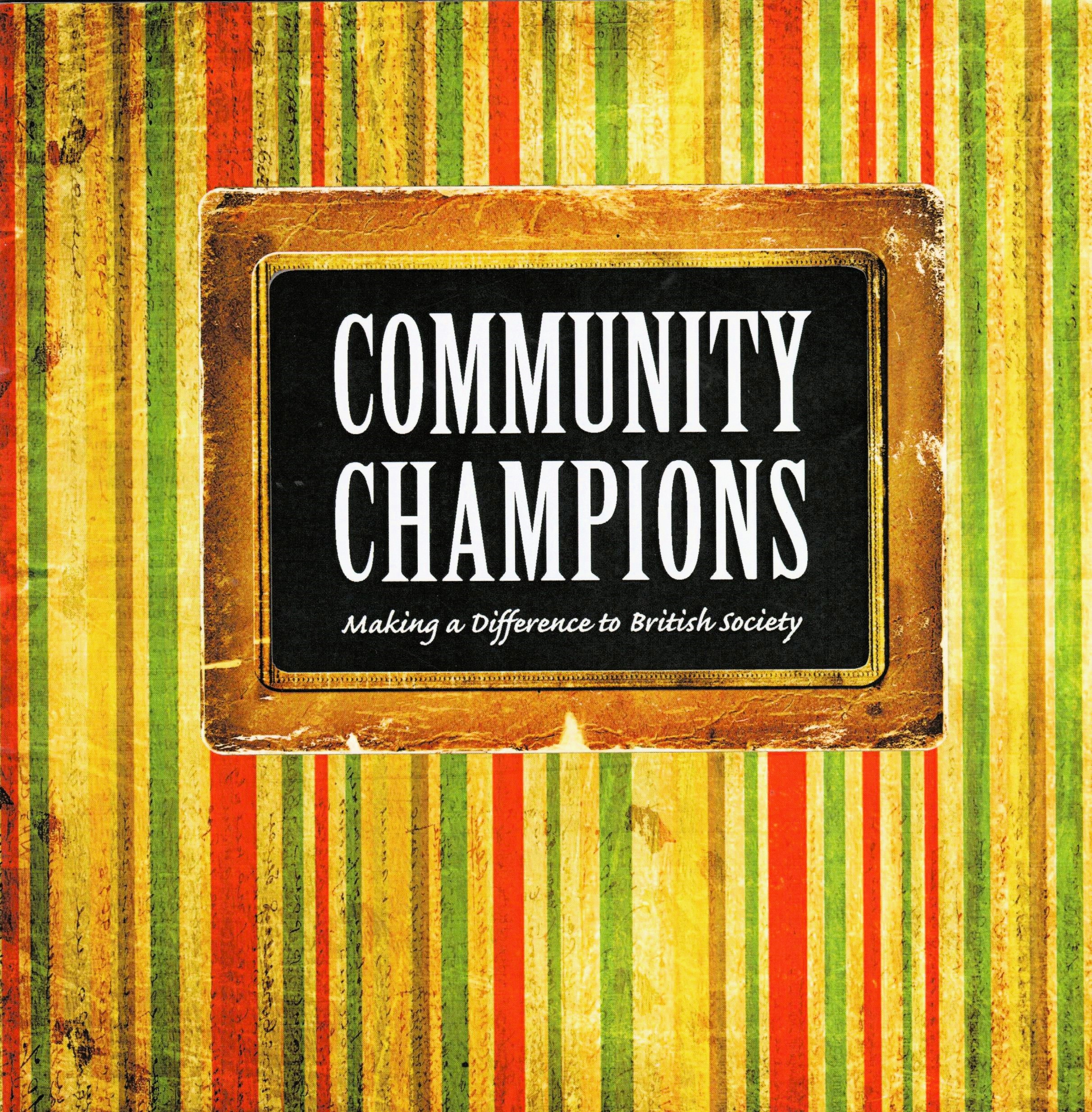
Front cover of Community Champions booklet.
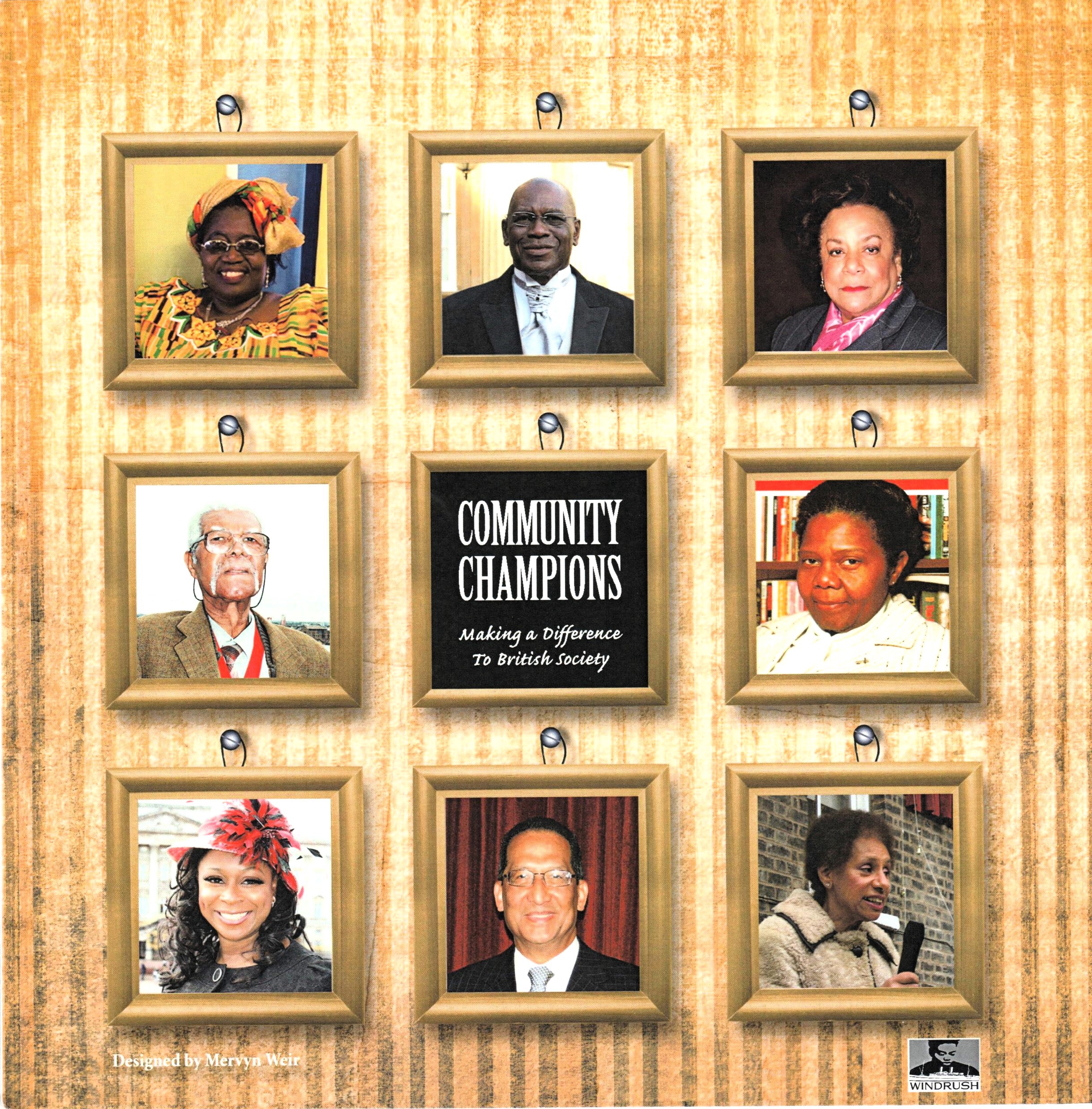
Top left to right – Dame Betty Asafu-Adjaye, Harry Cumberbatch MBE, Dame Jocelyn Anita Barrow, Sam King MBE, Sybil Phoenix OBE, Sonia Brown MBE, Ansel Wong CBE and Oku Ekpenyon.
African Heritage Forum
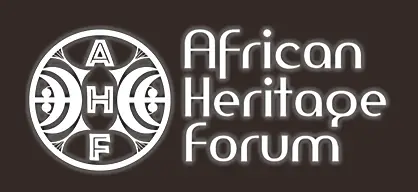
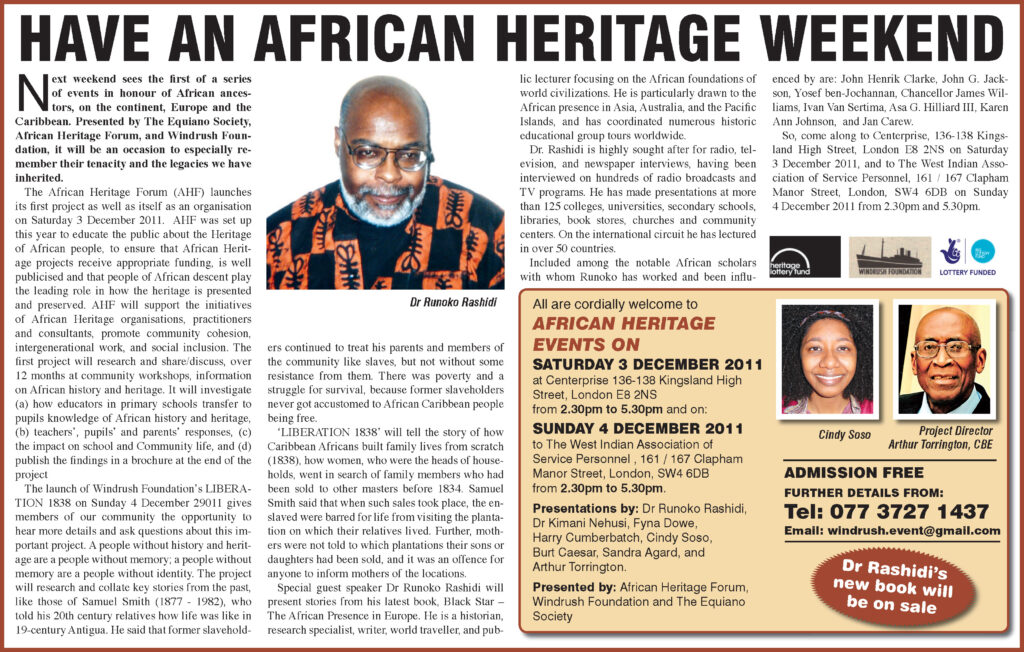

After obtaining a signed copy of *Black Star – The African Presence in Europe*, I had the privilege of taking a photograph with the esteemed historian, the late Dr. Runoko Rashidi.
Tony Cheeseman Foundation 2012
In association with the Windrush Foundation project Liberation 1838.
The Tony Cheeseman Foundation 2012 lecture and exhibition.
Annual Community Award
Presenting the late Sam King MBE with the Foundations’ 2012 Annual Community Award. Sam was one of the passengers on the Windrush, that arrived at Tilbury docks in 1948.
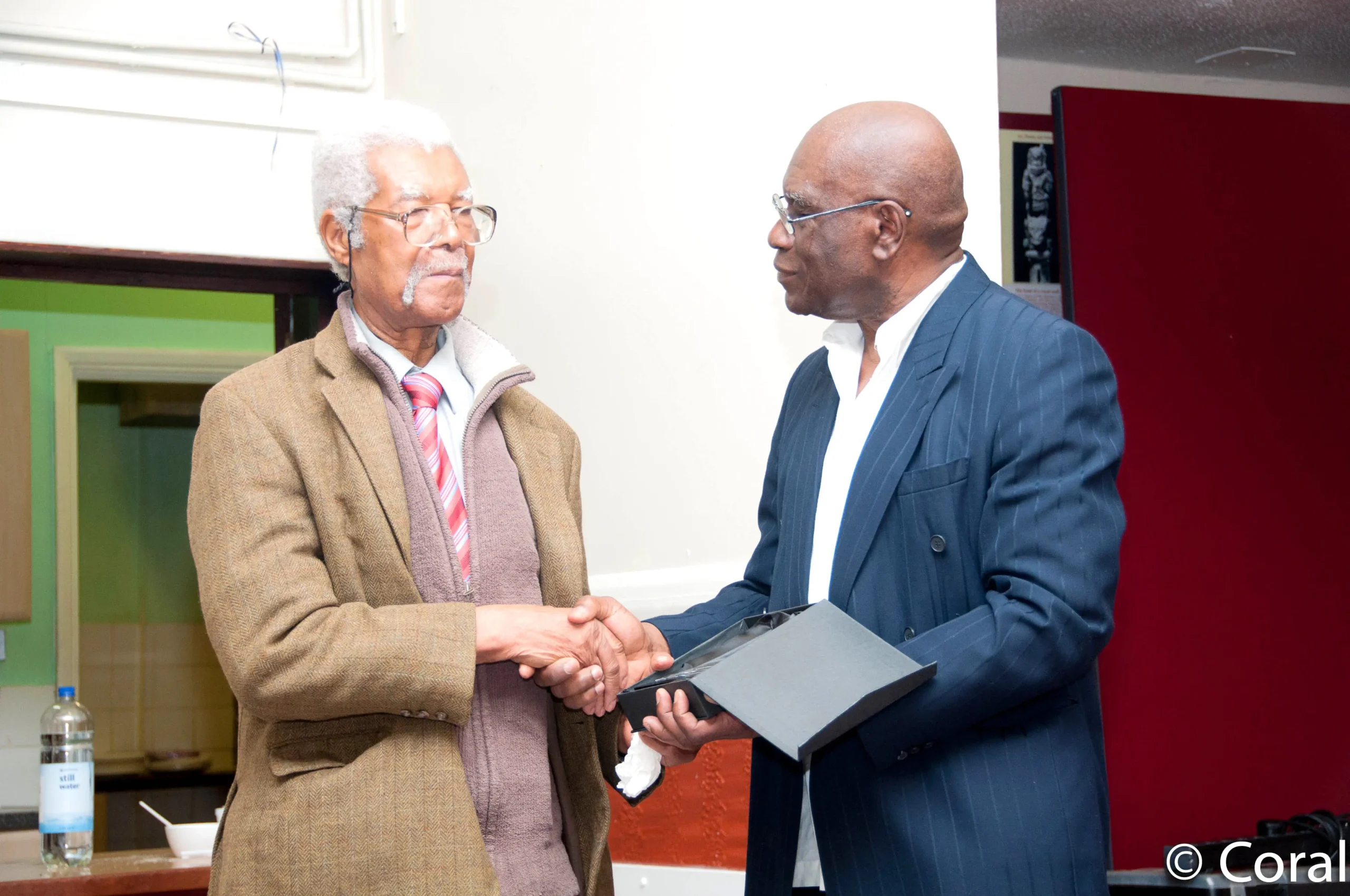
The Tony Cheeseman Foundation’s first exhibition, “From Discovery to Independence: Highlighting the Journey of Sugar from the Caribbean to the London Borough of Newham,” was organised in collaboration with the National Archives’ Caribbean Through a Lens project. The exhibition initiated a series of tours, with the first stop taking place in 2012 at the Newham African Caribbean Resource Centre.
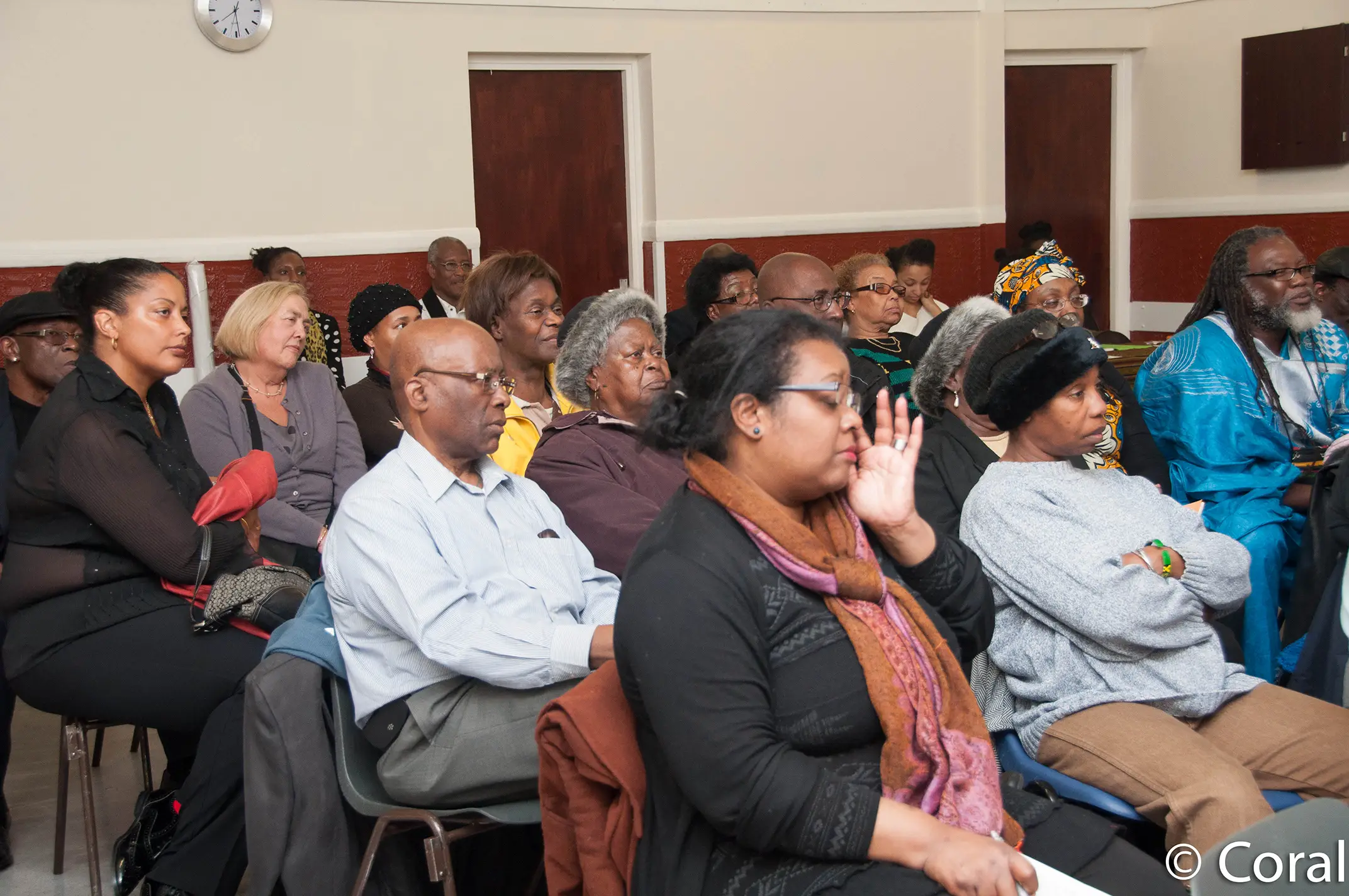
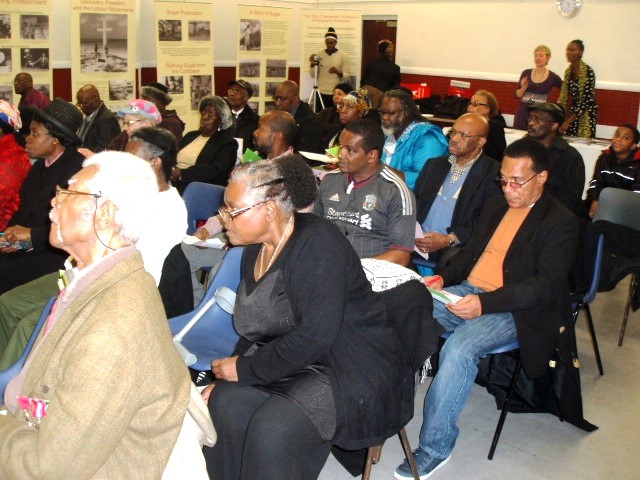
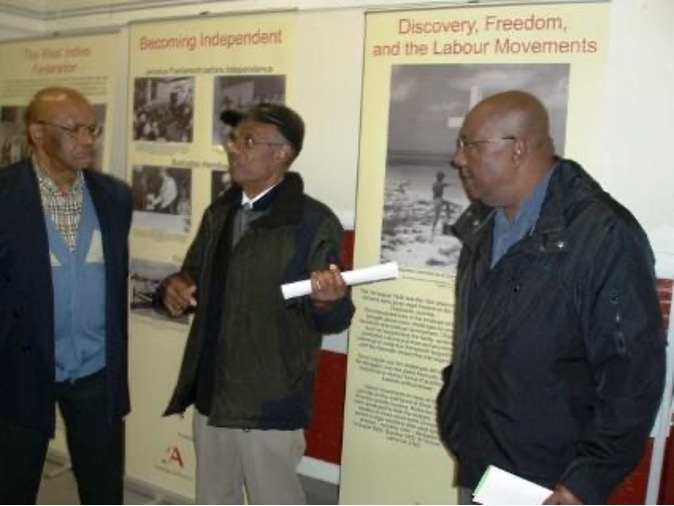
Click the images below to view the exhibition panels.
Black History Month
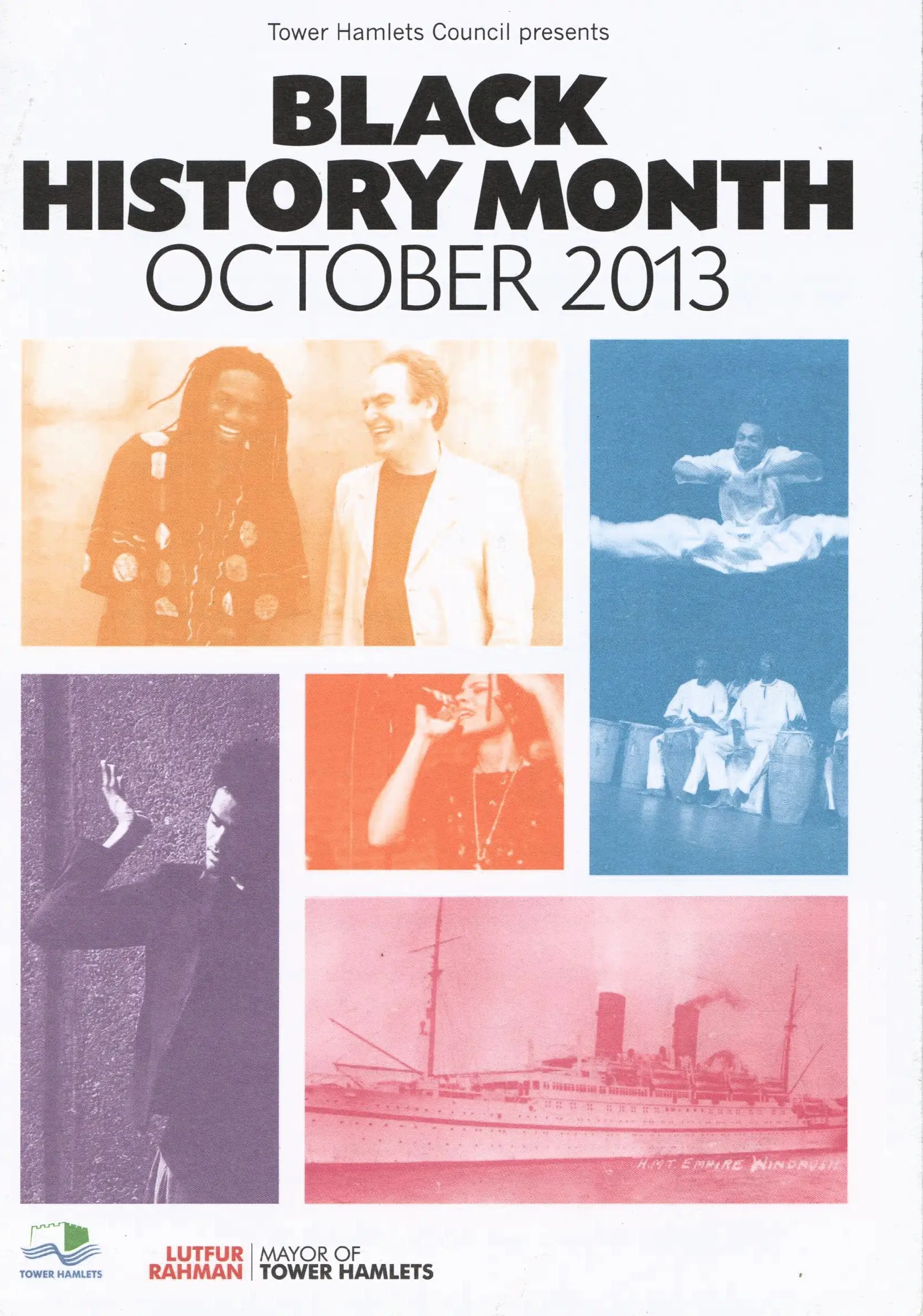
Tower Hamlets 2013 Programe Front cover.
The Foundation was invited to conduct a workshop and showcase the exhibition as part of THACMHO’s 2013 BHM celebrations. As publicised in the Tower Hamlets Programme.
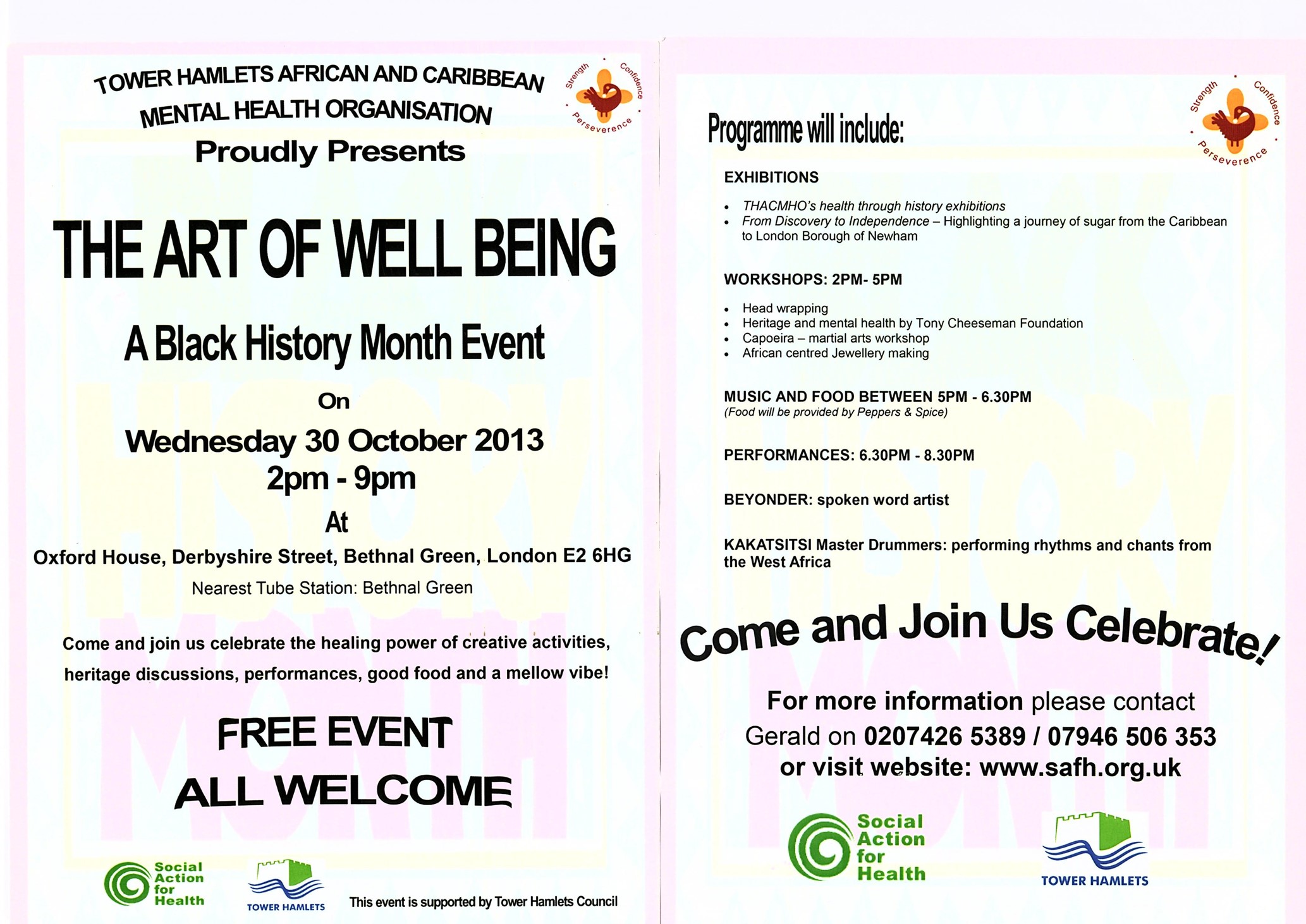
Combating the stigma of mental illness.
Here, I share with you a talk from Sidney Millen, the Chair of THACMHO about his mental health challenges. The Sainsbury Report ‘Breaking the Cycle of Fear’, which reviews the relationship between mental health services and the African and Caribbean communities. Also, a slide presentation I did for a Mental Health workshop in 2011.
Down, Never Out – Sidney Millen |
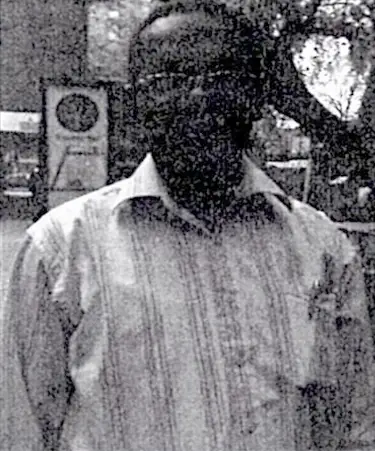 |
My talk is entitled Down, Never Out and is the story of my ongoing battle of living with manic depression or, for those who like technical terms – Bi Polar Affective Mood Disorder. Since being diagnosed in 1997 I have come to view my struggles with my illness like a boxing match, sometimes we weave and bob, other time we stand toe to toe trading blows and other times it lands a knockout punch which leaves me down but never out. I’ve taken many blows, had numerous falls but always, with dogged determination I get up. Through my many falls I’ve firmly clung to the belief that falling is not failure but failing to get up is. Let me say that again for the benefit of my fellow service users who may know what it’s like to take a fall, falling is not failure, failing to get up is. No matter how many times I have been knocked down before or how many times I will get knocked down in the future, I will always get up. I have been down but never out and I intend to be still standing when final bells ring.
I was first diagnosed with manic depression in 1997, just over a year after I arrived in the UK from my native Zimbabwe. In Zimbabwe life had never been easy coming from a broken home and growing up in abject poverty. But throughout my growing years I clung to the belief that one day I would fulfil my dream and make it as a journalist. At age 21, after many trials and pitfalls I achieve my dream and landed my first job as a reporter with a weekly regional newspaper. For the next 5 years I lived my dream rising from junior reporter to senior reporter with in my first year, then becoming editor of a weekly independent newspaper before landing a job as a senior reporter on Zimbabwe’s first independent national daily newspaper. When this newspaper folded 1995 I left for the UK with the hope of furthering my career. And that’s when the nightmare began.
I had left my wife a young daughter in Zimbabwe and took the first job that came along as a security guard simply because I needed the money to bring them over. It took me 6 months of working 12 hours a day, 6 days a week earning £2 a hour as security guard before I could afford their air fares. I then try to refocus on my career by enrolling on a 1-year journalism course. I was still working 12-hour night shift as a security guard then going to college from 9-5 Monday to Friday. This punishing schedule took its tool and in March 1997 I suffered my first breakdown, was section under the mental health act and diagnose with Manic Depression I was down but not out. It took almost 6 months but I recovered from that episode, dusted myself down and set about getting my life back on track. I managed to get myself a job as a parking attendant, lasted 5 months then broke down again. Over the next 8 years I spent my time learning to live with my illness. In the beginning it was denial that stopped me from getting to grips with my illness. I refuse to believe that I could be suffering from a mental illness, it was something that happen to other people, not me. It took me a long time to finally accept that I did have an illness. With my denial came my refusal to try and control my illness with medication.
Another reason I steadfastly refused to take my medication was the poor relationship I had with my consultant psychiatrist. I found him to arrogant, pompous and aloof. It was almost as if even though it was my illness he felt he was the expert and only his way would work in controlling it. He would not allow me to own my illness. He treated me like a statistic not an individual and I had a deep mistrust of him. My way of showing him that he did not hold all the power was by incessantly refusing to take medication. Only by manipulating a change in the mental health system was I allowed to change my consultant. One of the first things she did was look back at my life to try and find the root cause of my illness. She listened, she cared but most of all she gave me ownership of my illness.
My confidence and self-belief were restored. She had me believing that not only could I get a job after many years of un-employment, but also that one day I could become a journalist again. With her I didn’t need talking therapy because she provided it herself. Often our scheduled 15 minutes’ appointments lasted well over a hour and we talk about everything in my life which could have a bearing on my mental state. To say she had been a God-send would be an understatement. Since my last episode in 2005 I have Made study progress not only with my illness but in life. In 2004 I had joined a back to work scheme run by the Working Well Trust where I learned desktop publishing skills. This is an excellent scheme which is still striving and playing a major part in helping people with mental illnesses back to work. I have also been a member of a user led user run support group since 1998 which has been instrumental in helping me and others on our journeys of recovery.
THACMHO exist to support African and Caribbean mental service users to make their lives in the community more fulfilling and liberating. It also exists to combat the stigma surrounding mental illness. THACHMO’s the development worker, Harry Cumberbatch, was a tower of strength in supporting members of the organisation. He became a father figure to me offering wisdom, guidance and even sometimes – a shoulder to cry on. Harry was awarded and MBE for his work with THACHMO. I became Chair of THACHMO in 2002, until 2007 when I step down to apply for the development worker post which had become vacant when my mentor and father figure, Harry, retired. When I was appointed to the post I was thrilled to have secured my first proper job in almost 8 years.
Even though it was only a 6 month contract I saw it as a stepping stone to bigger and better things. I saw it as another step towards getting back to journalism. Throughout my journey of recovery, I have learned many lessons, but some stand out more than others. For instance, I have learned that all too often we the service users are our own worst enemies. We lose hope, give up the fight and are almost content to let life pass us by. I have learned that the tragedy of life does not lie in us not achieving our goals, the tragedy lies in us not having a goal to achieve. I have learned that mental illness is a barrier that can be overcome. I have learned that even when I am down I am never out.
My Very Important Events – VIE’s
Being supported by the family at my investure ceremony in 2006.
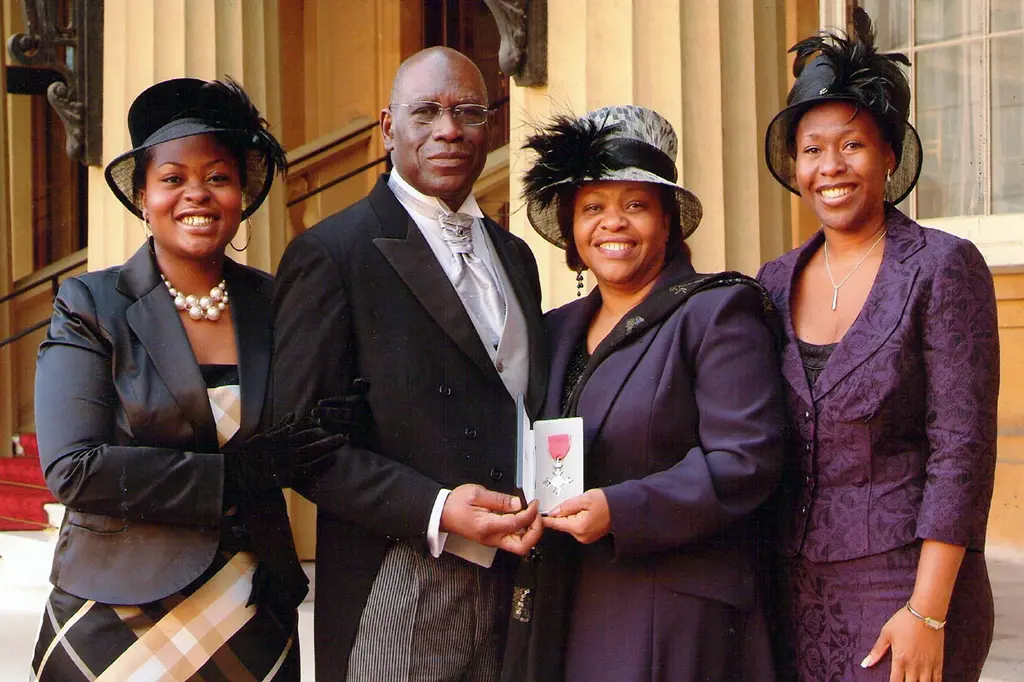
Thank you.
The last Decade: 2014 – 2025.
Celebrating 60 Years of Dedicated Community Service 17th September 1964 – 17th September 2025




